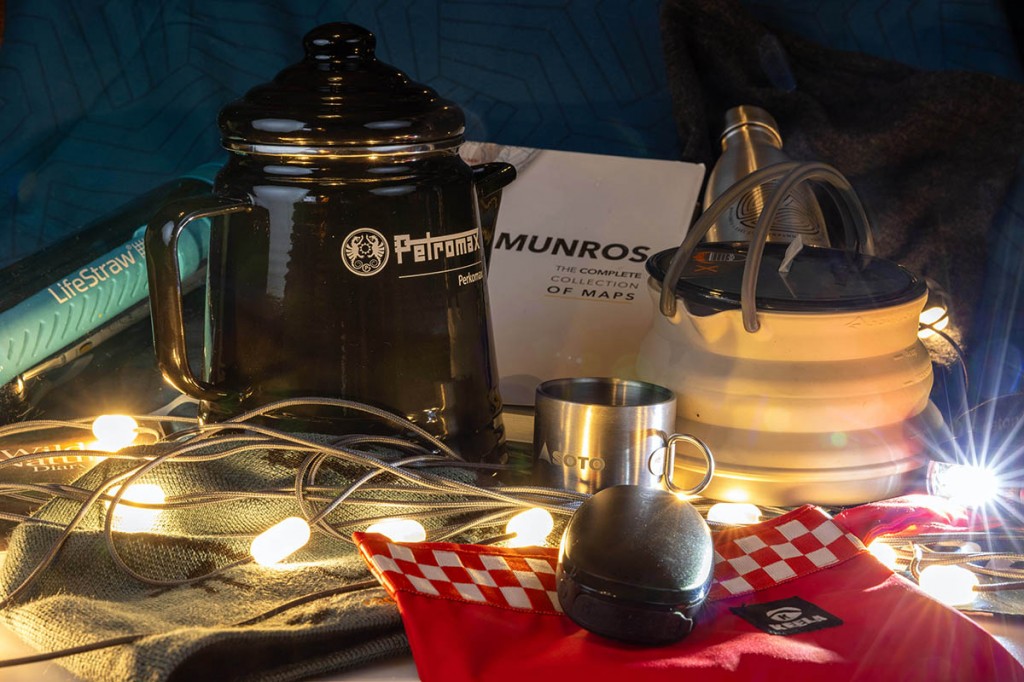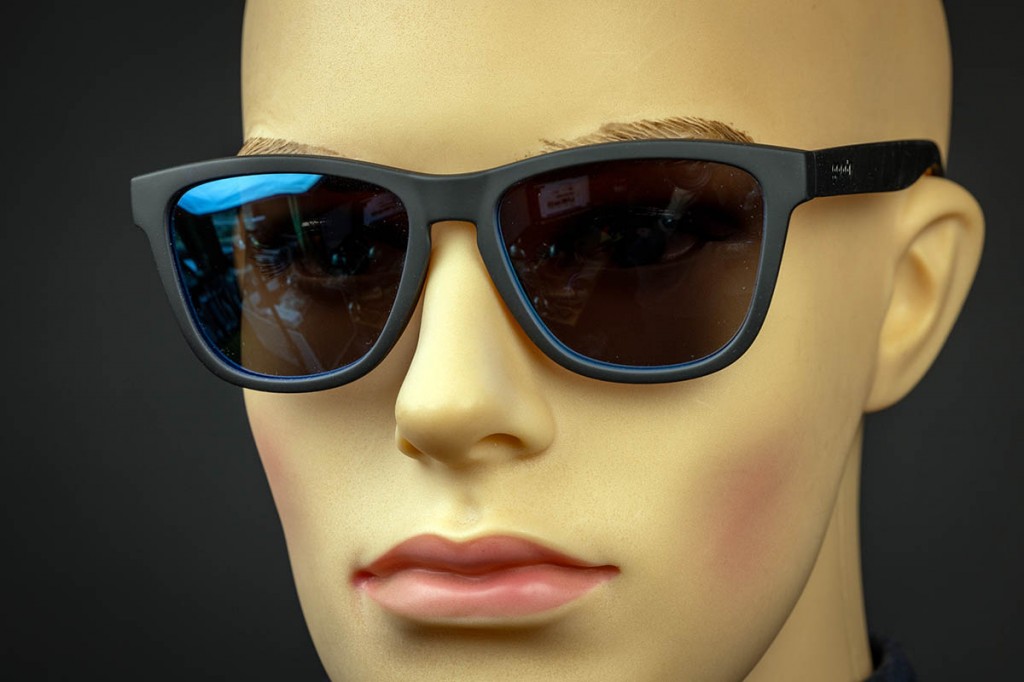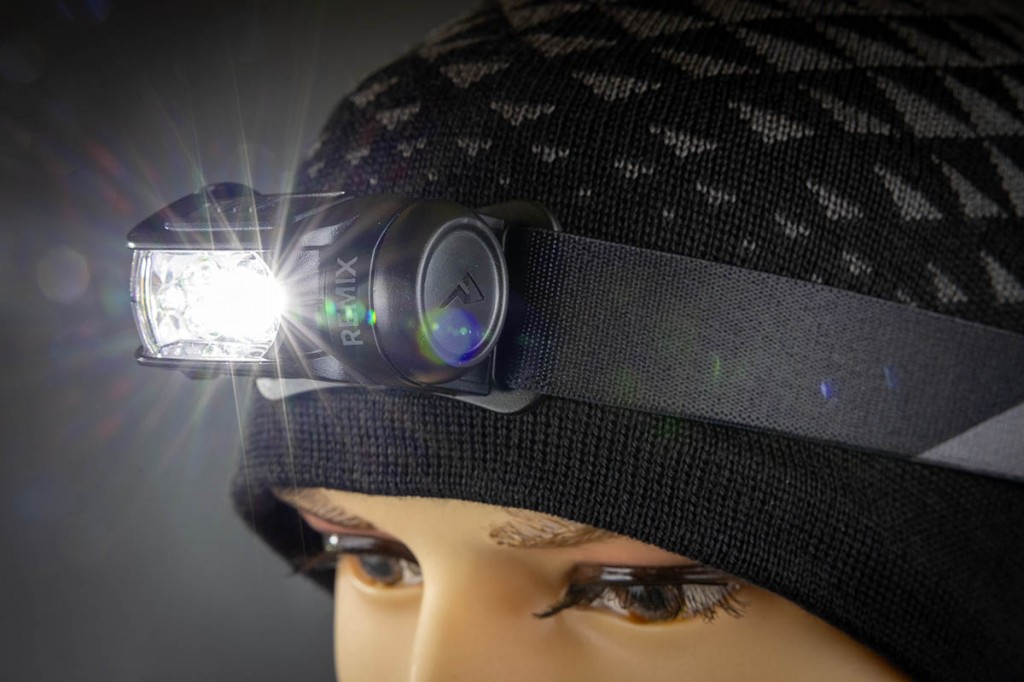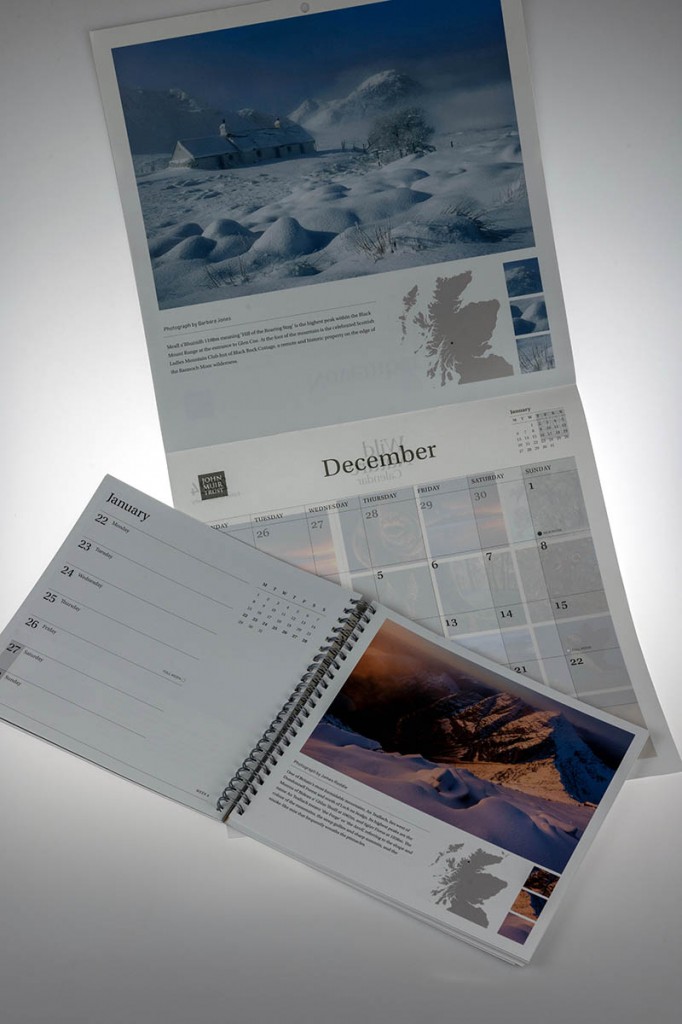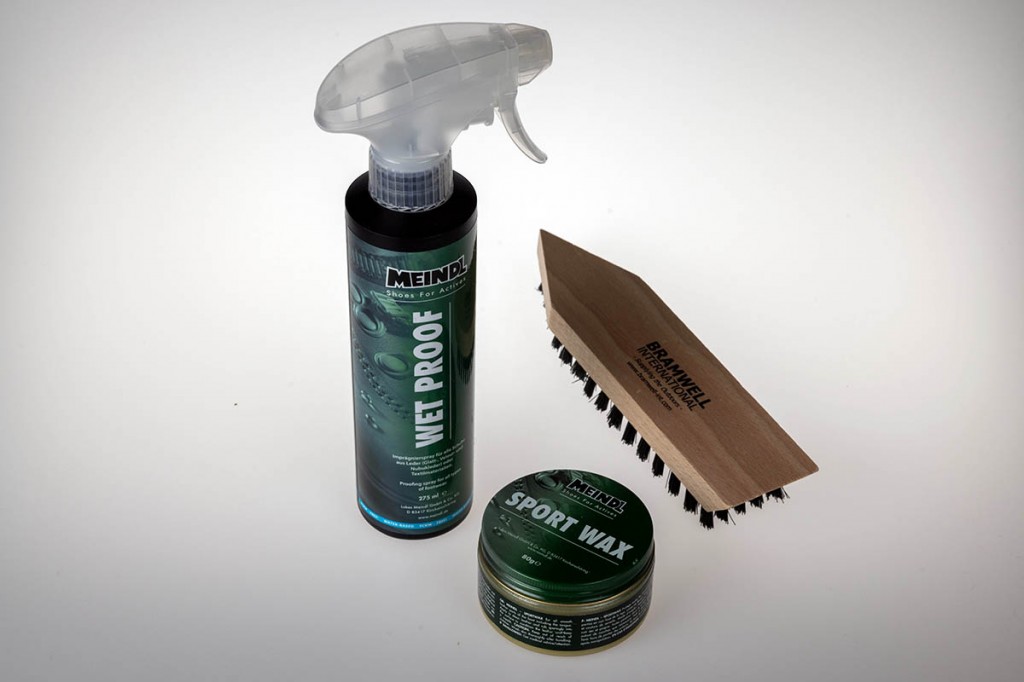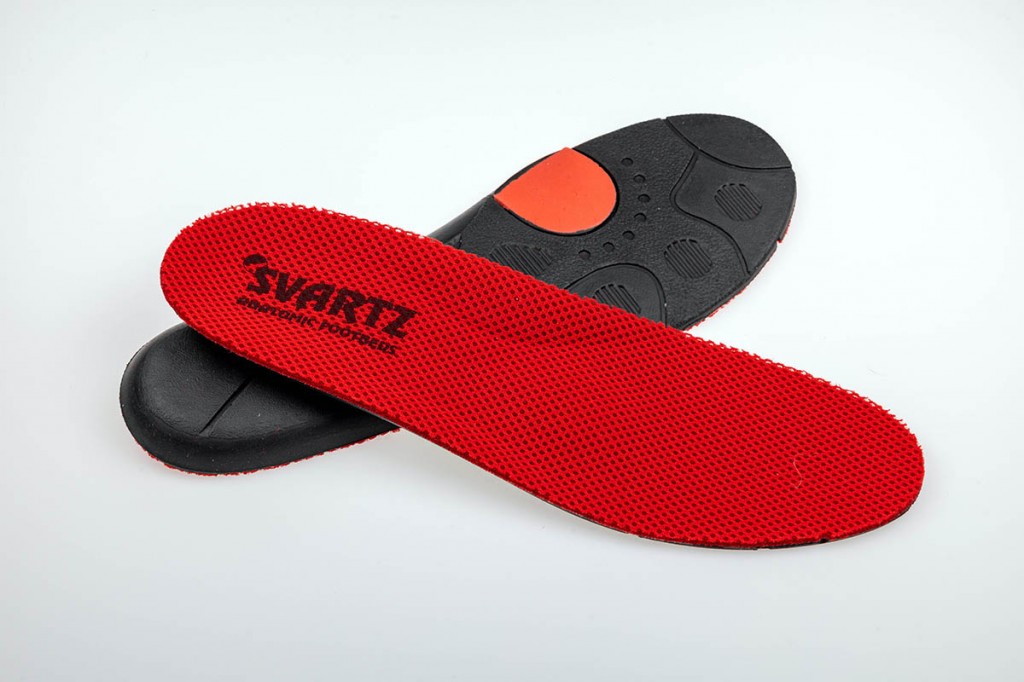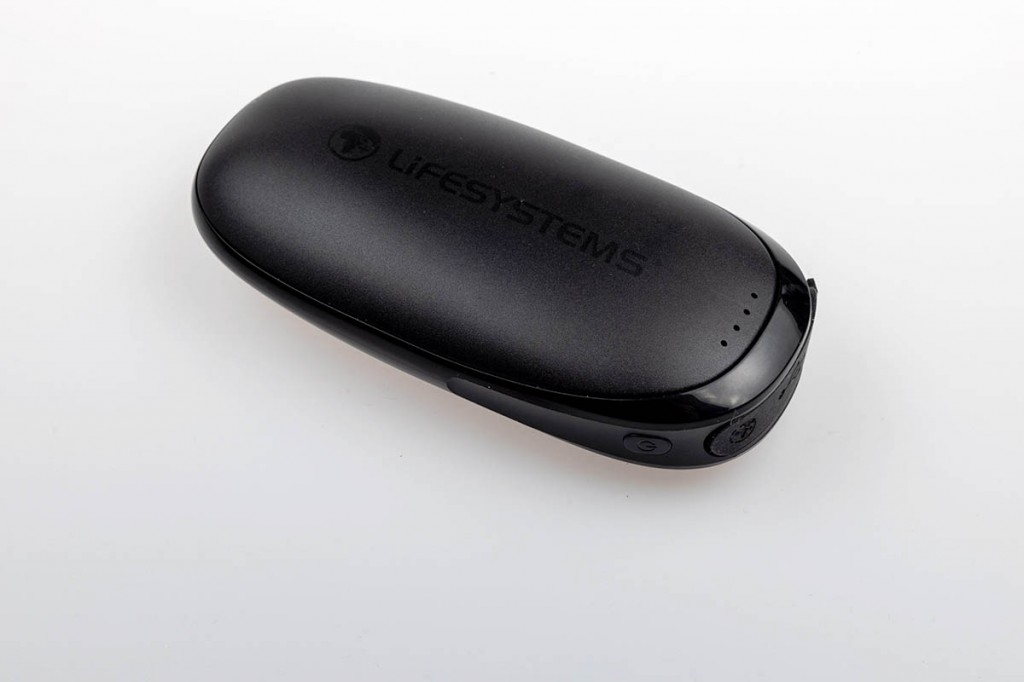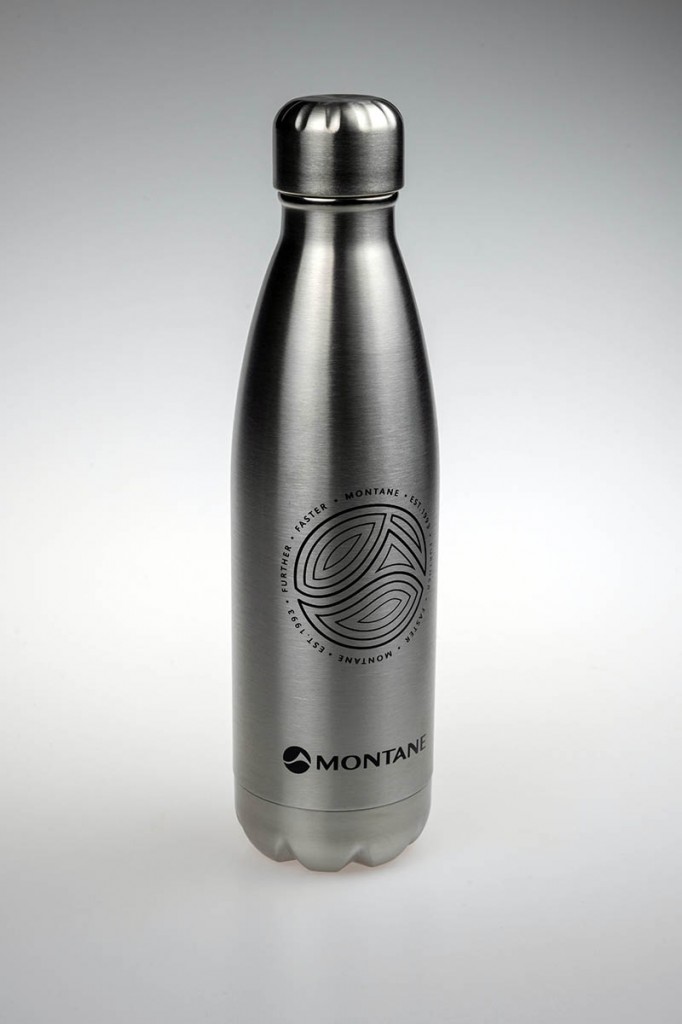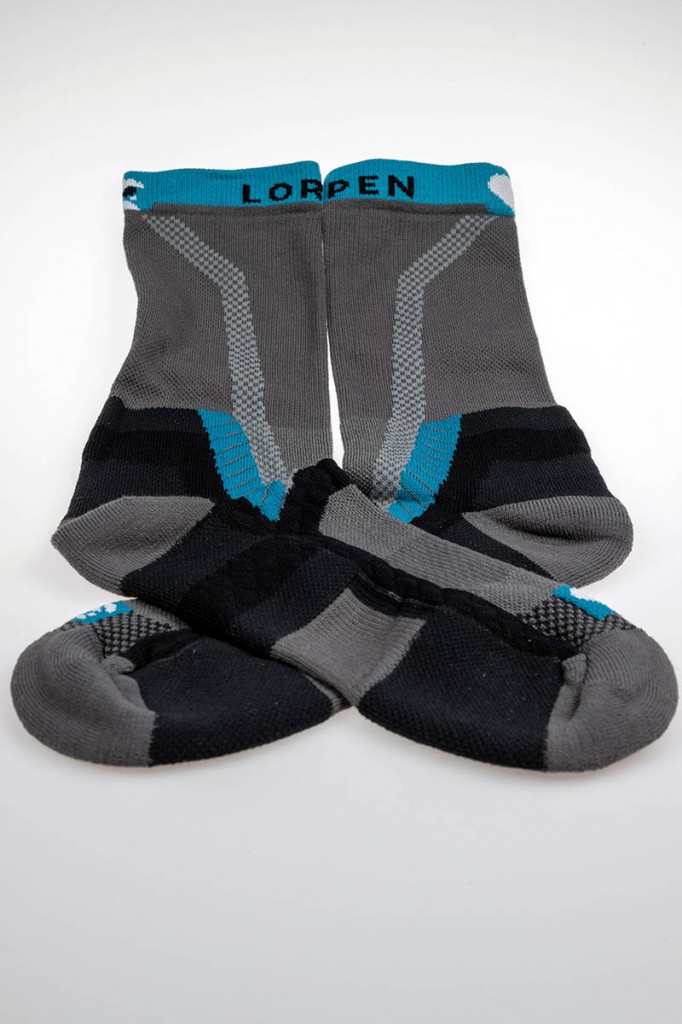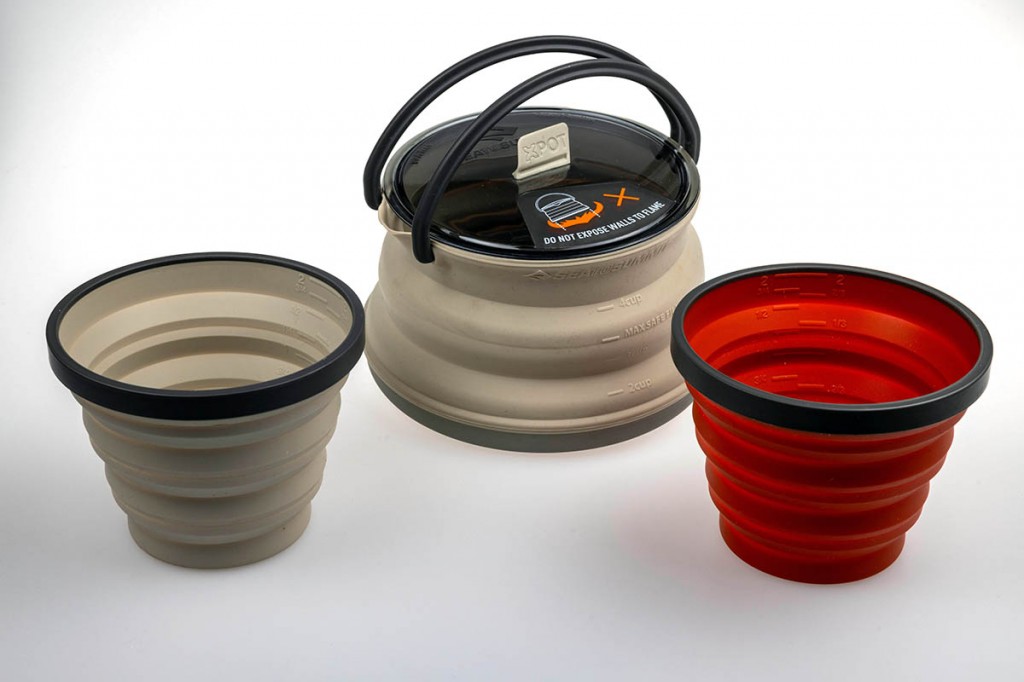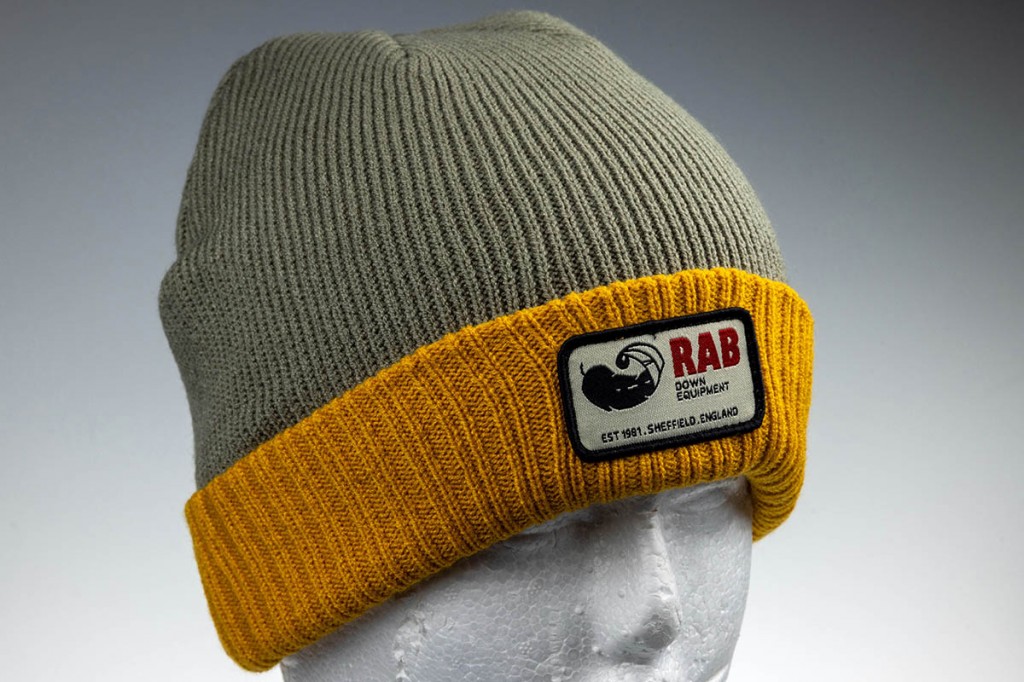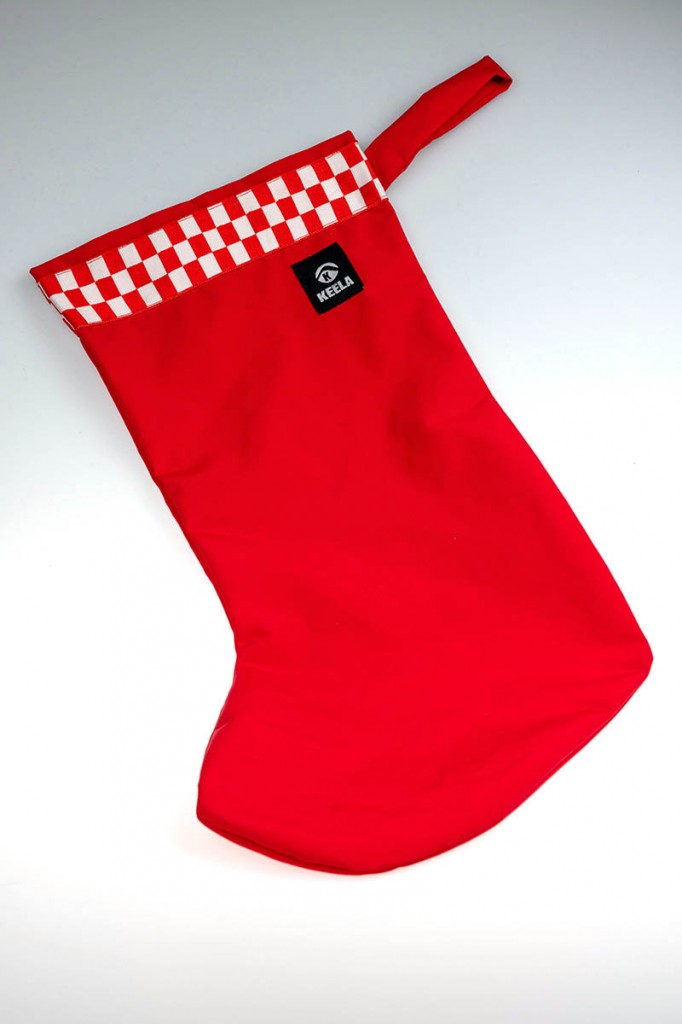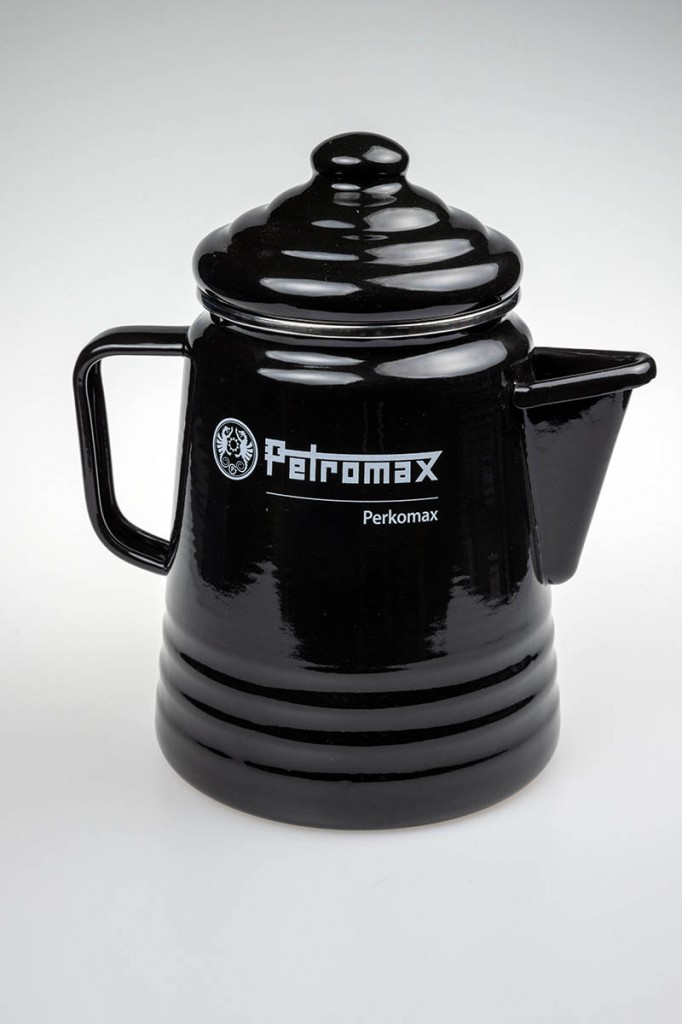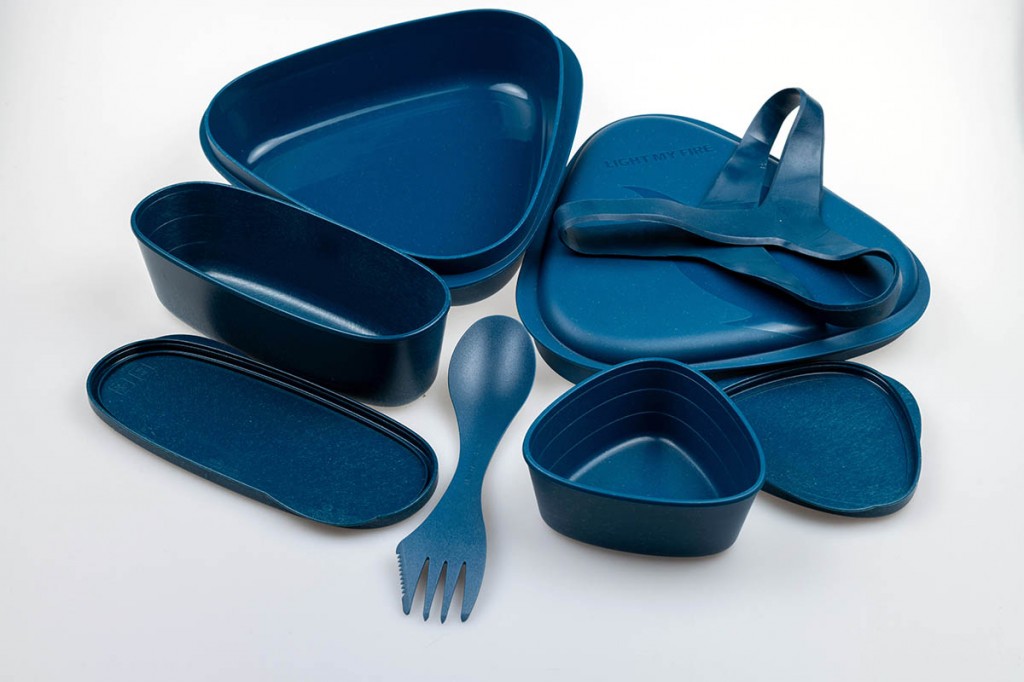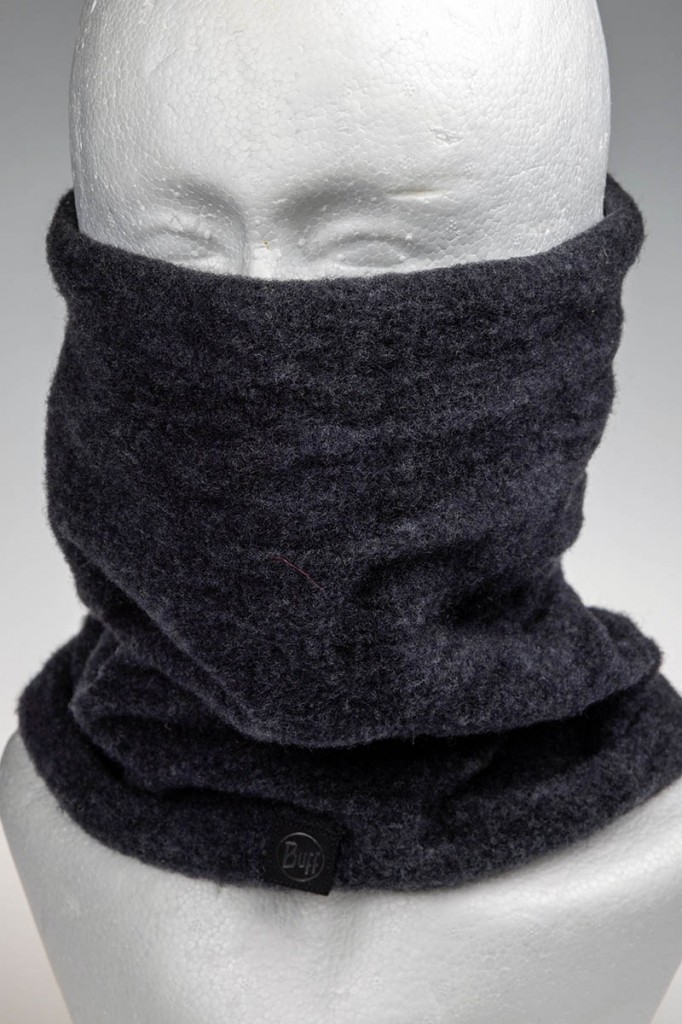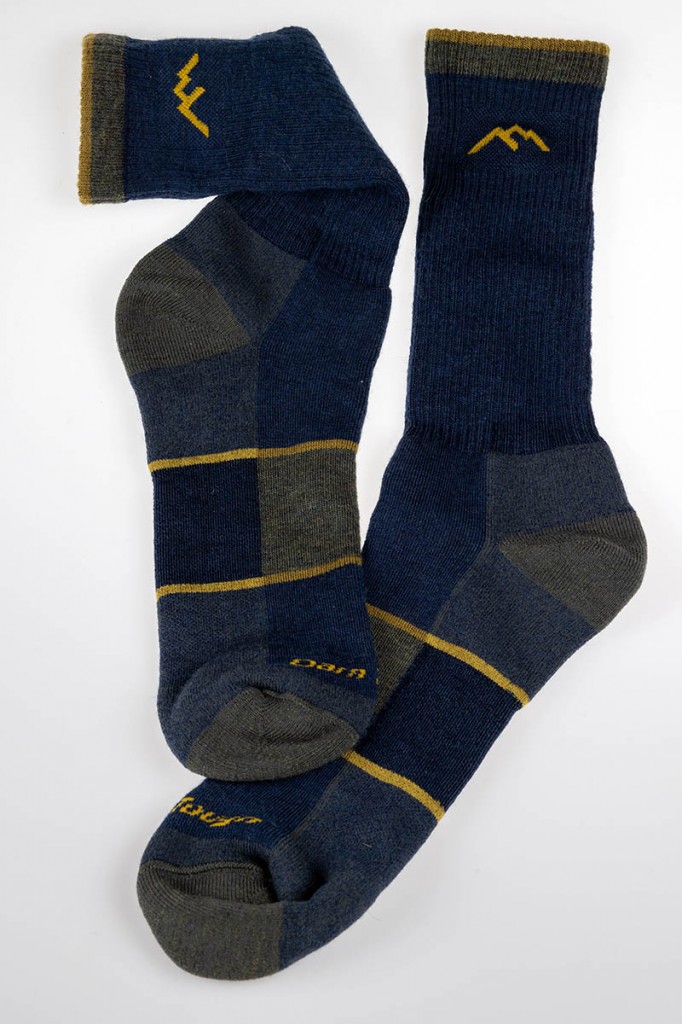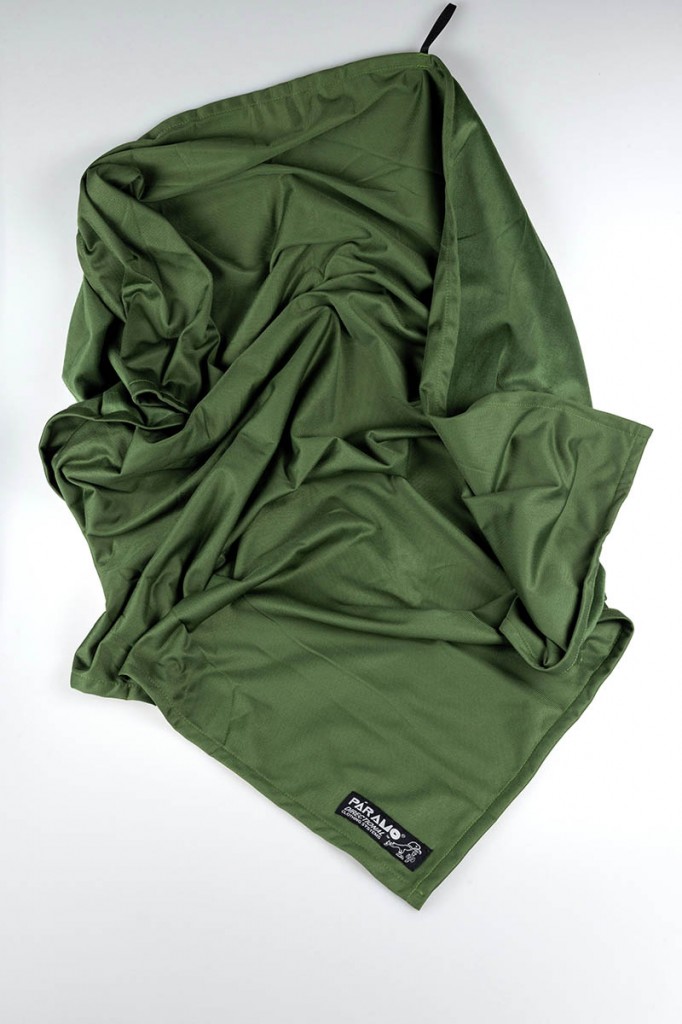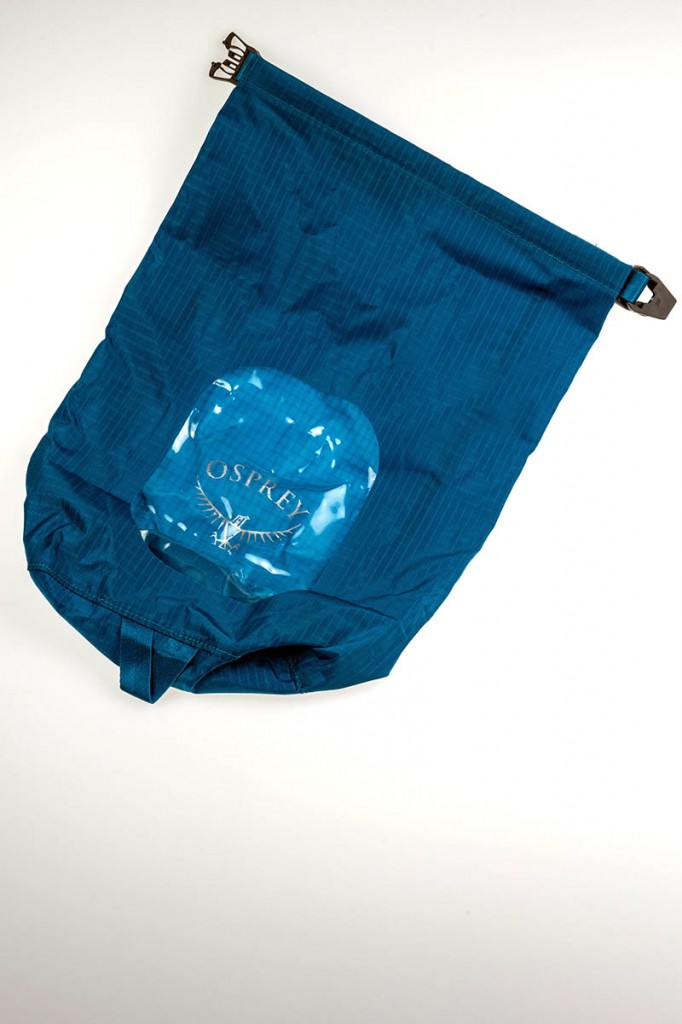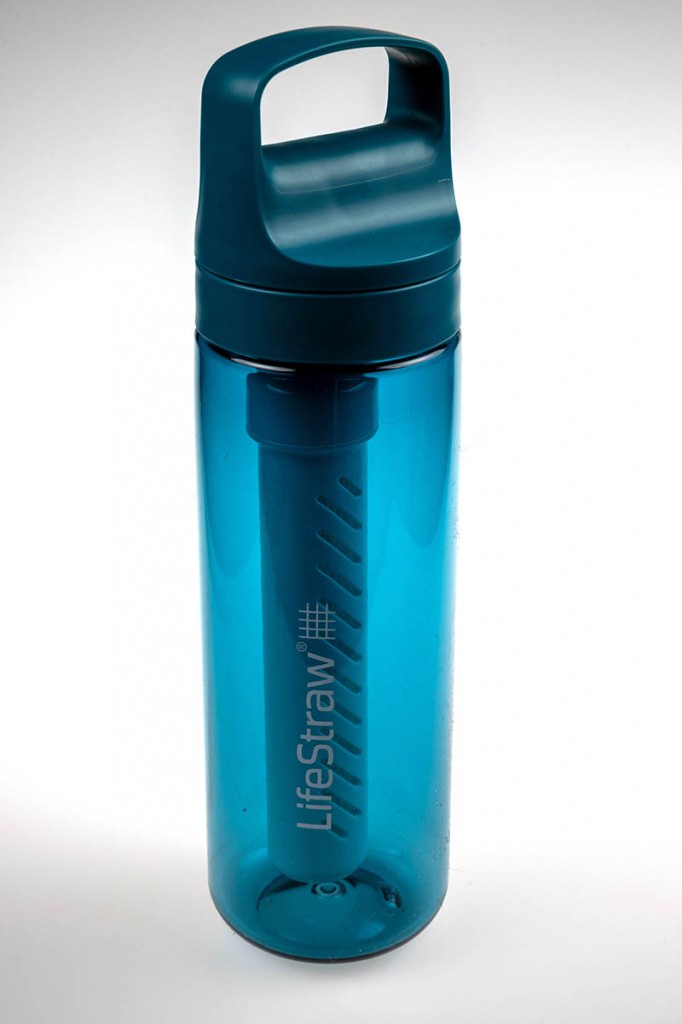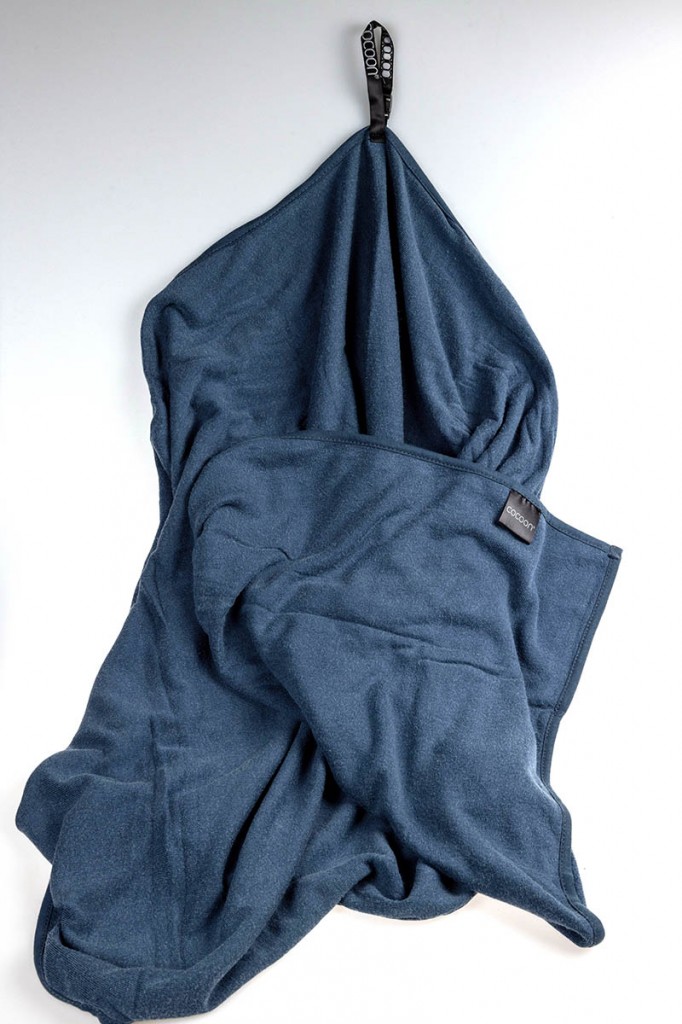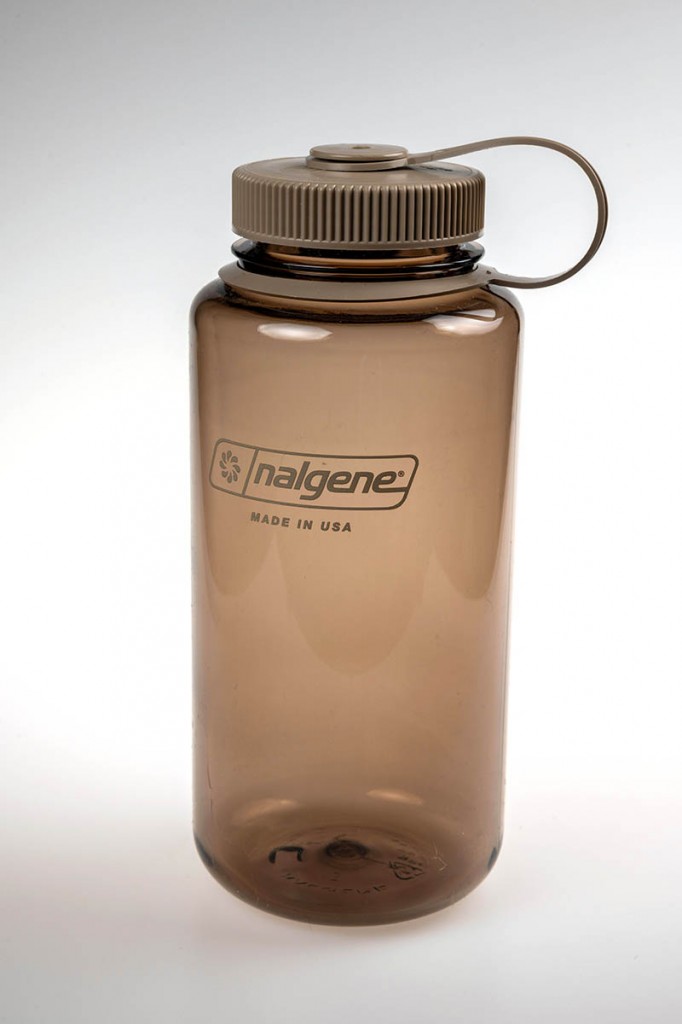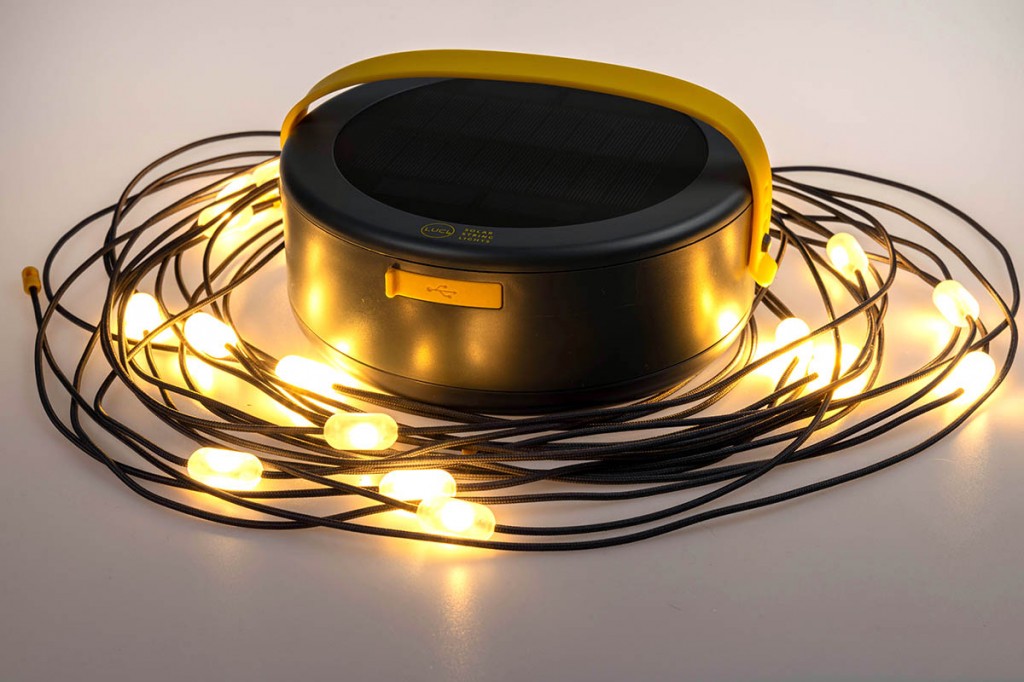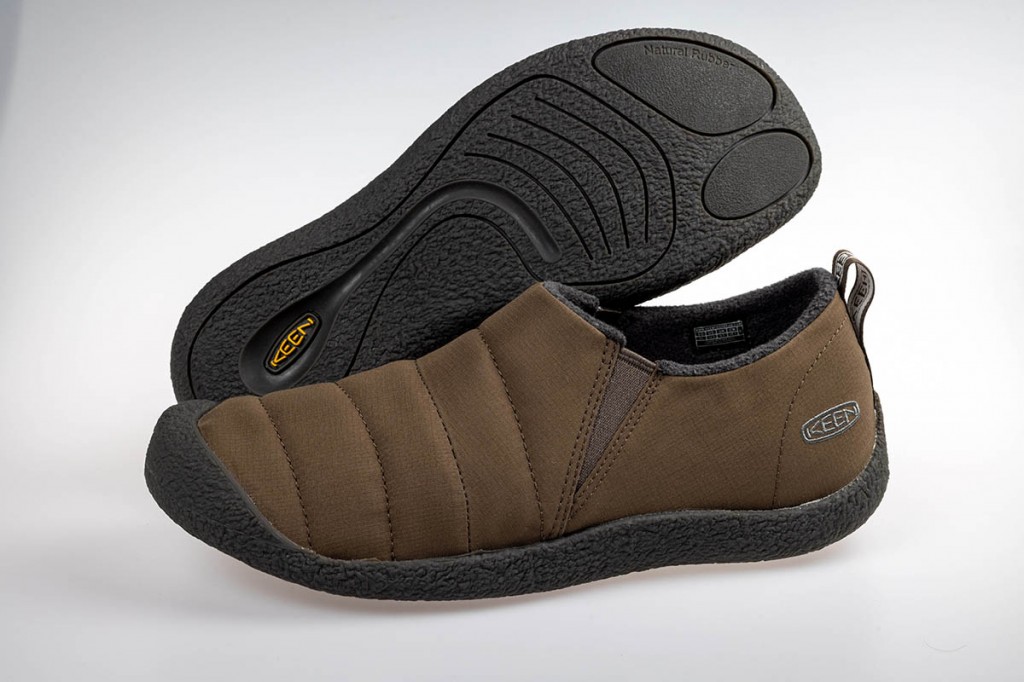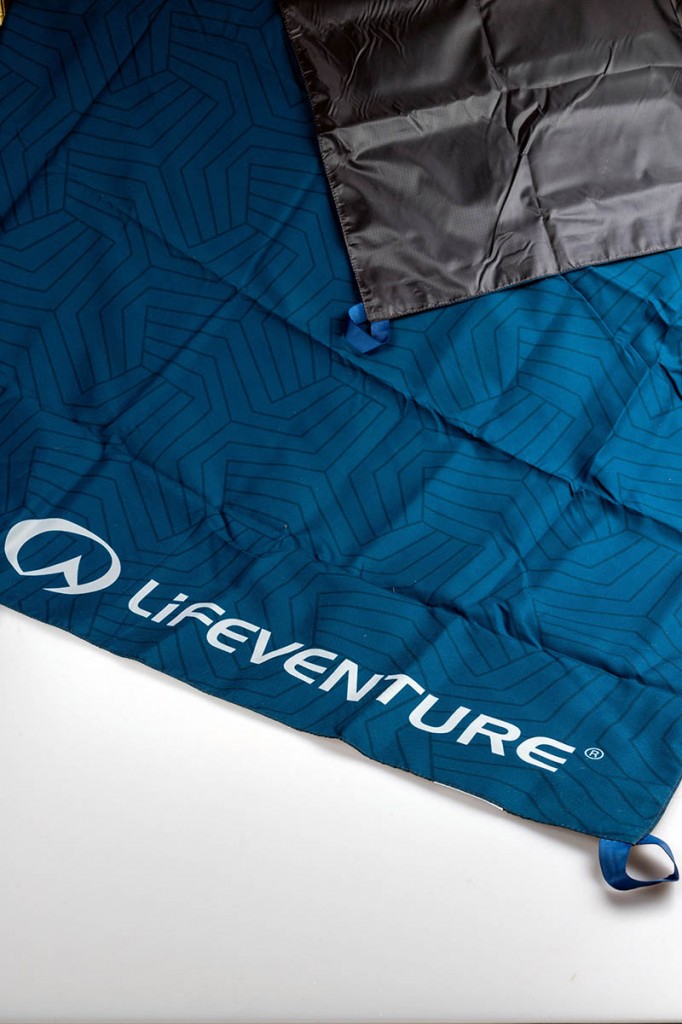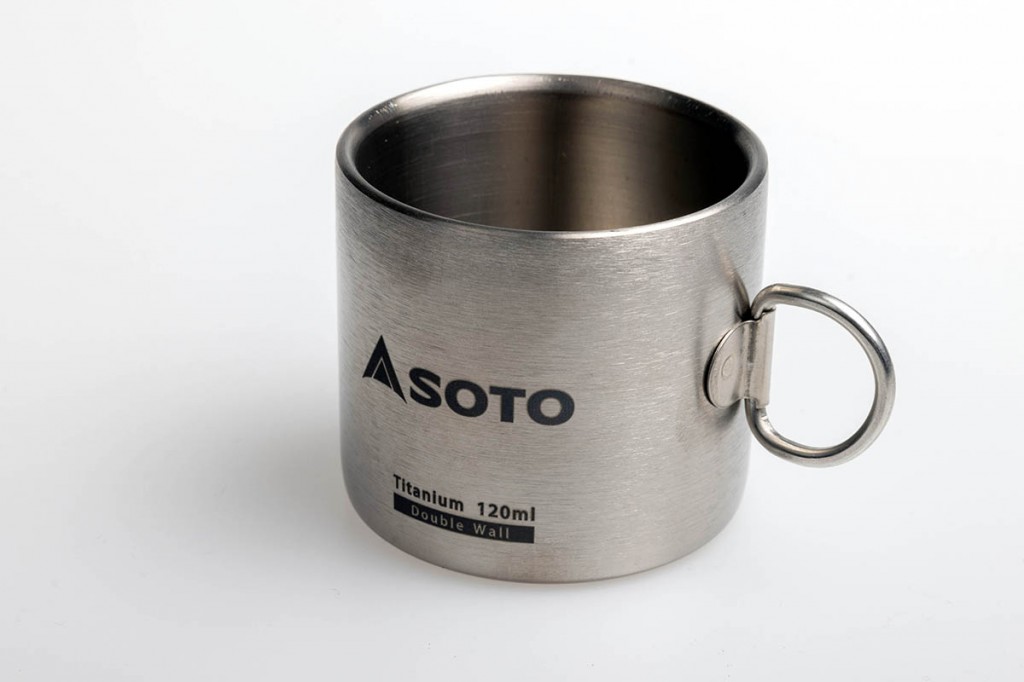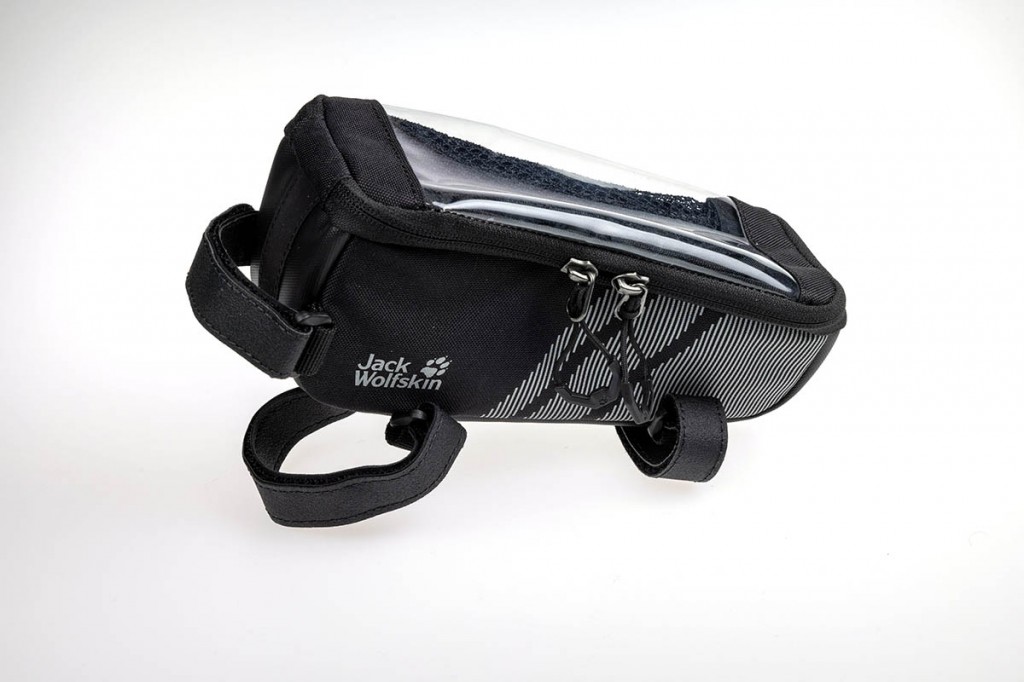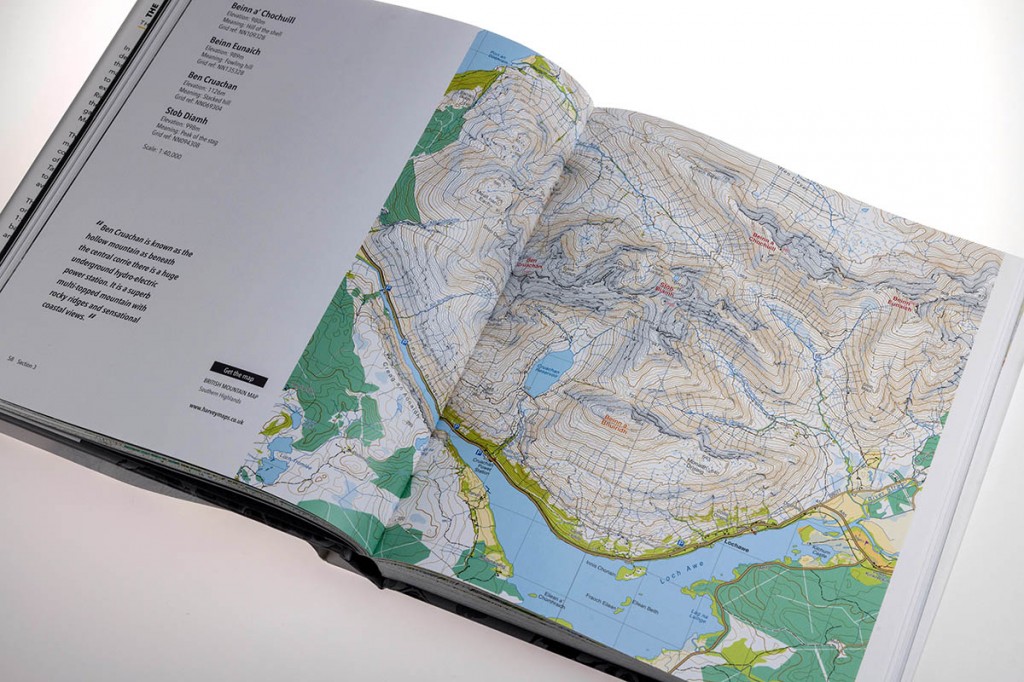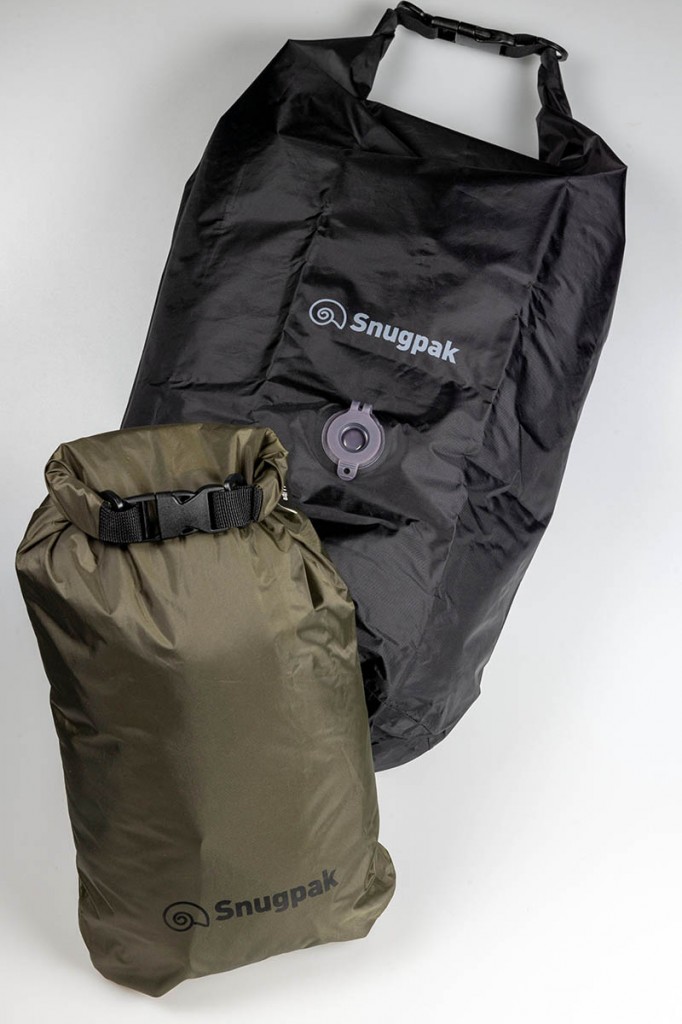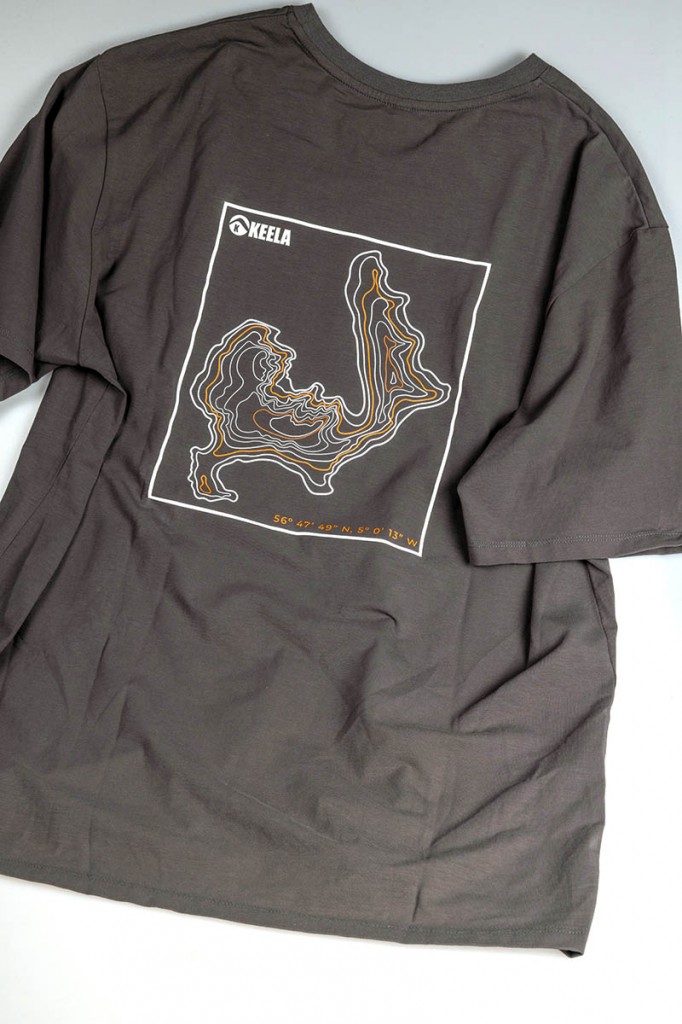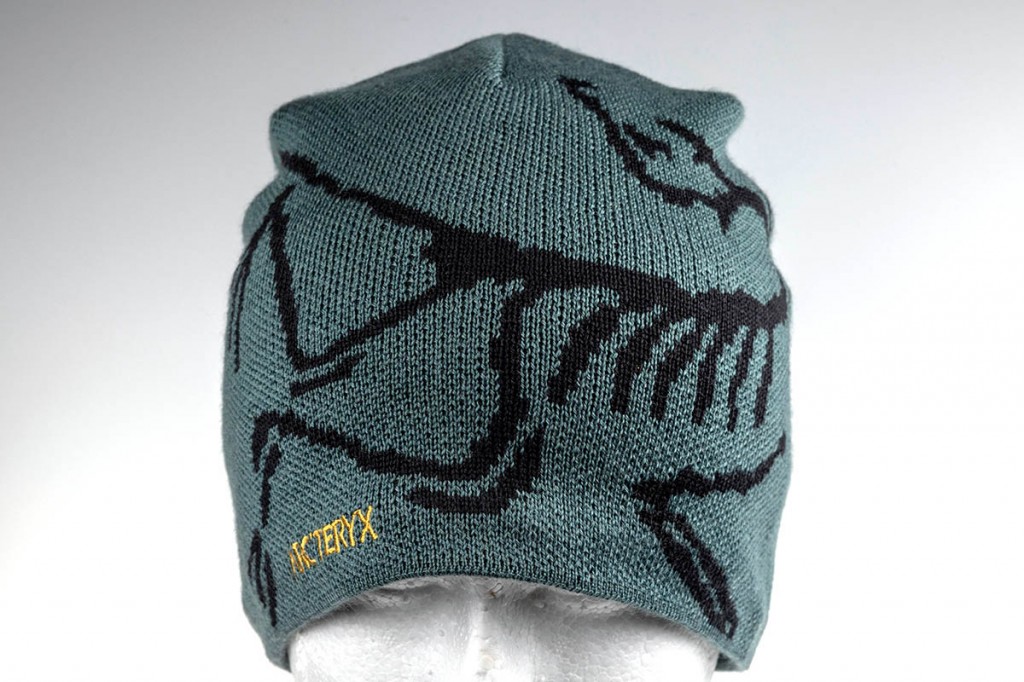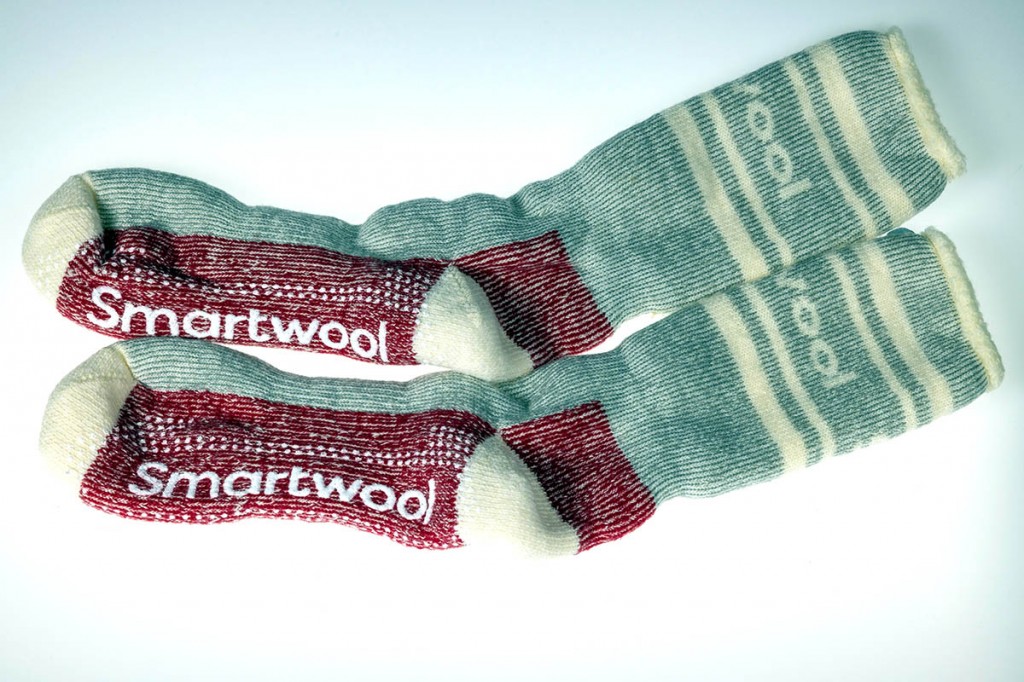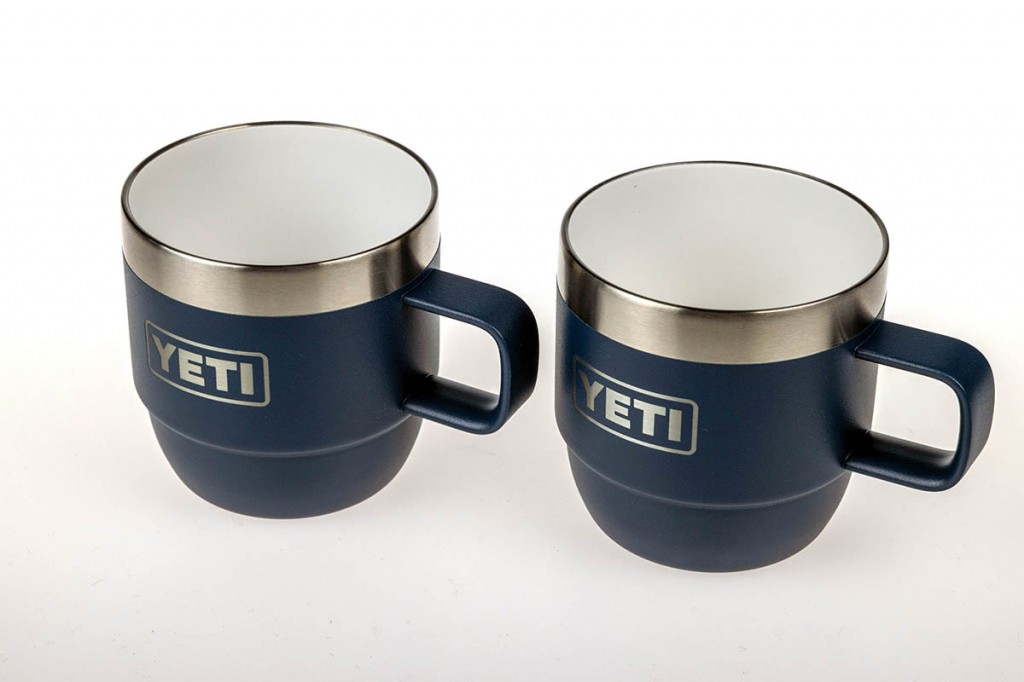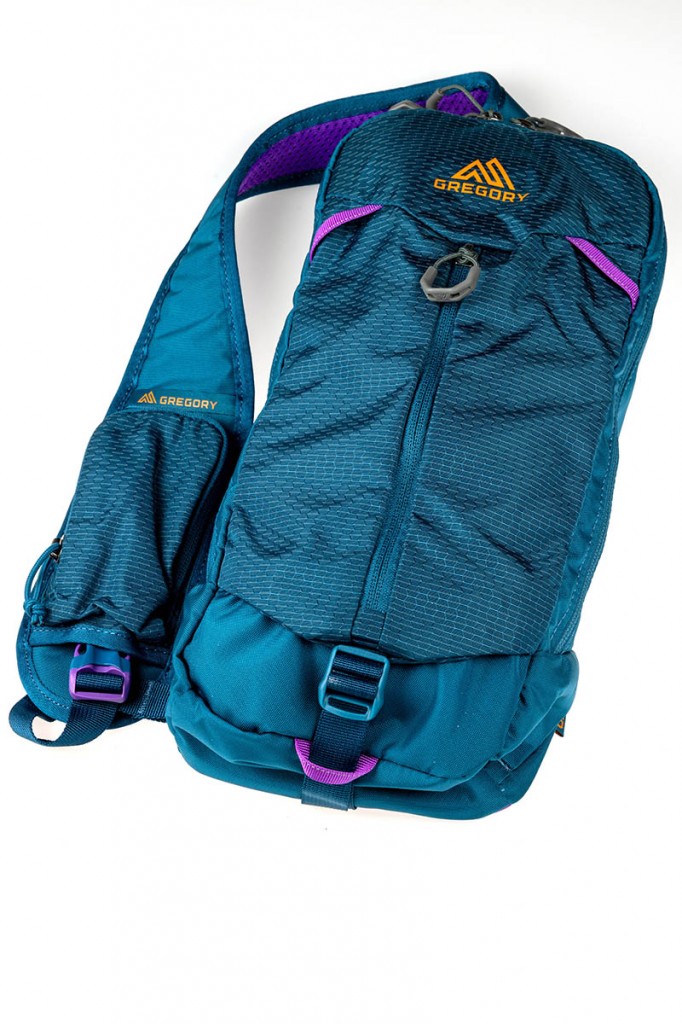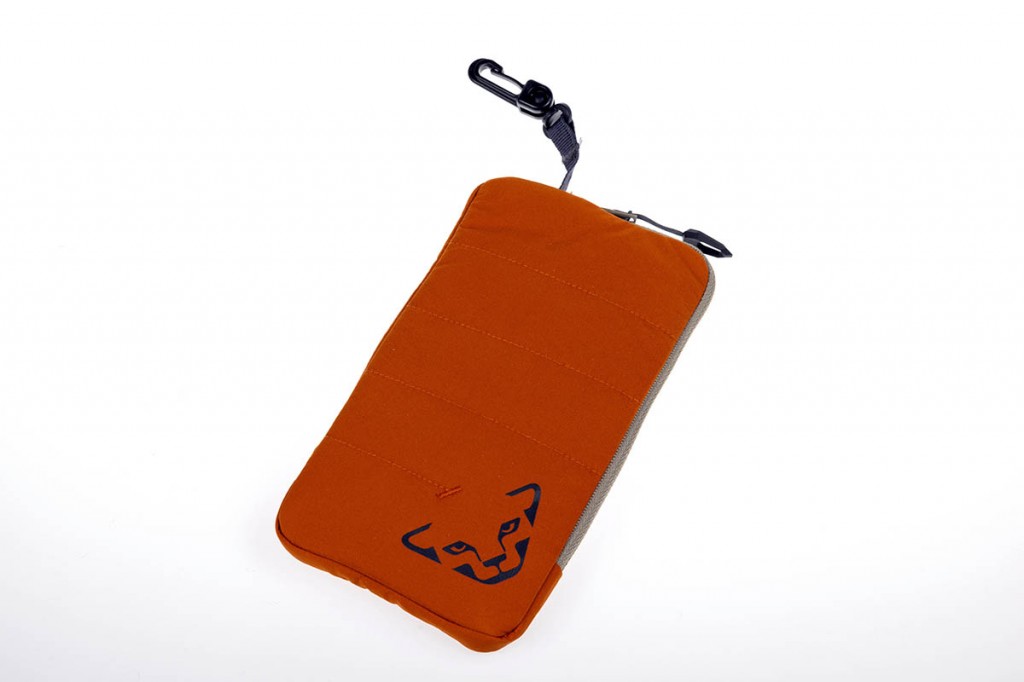Christmas is fast approaching, and with it the panic of what to buy your favourite outdoor enthusiast to fill their festive stocking.
Fear not: we’ve scoured the winter wonderland to find some suggestions for last-minute goodies for that hard-to-buy for outdoor fan.
So have a sift through our Yule suggestions and see what’s in store – or online!
Happy shopping.
Goodr OG sunglasses
£30
32g a pair, including soft case
Country of manufacture: China
Mention sunglasses to many people and the warm summer months will spring to mind, but your eyes need protection in the winter months too, when low sunlight can be dazzling. If there’s lying snow, the reflected light on a bright day can be painful.
I’ve been using these Goodr glasses for a few months now, so they’ve seen a good variety of conditions. The particular model tested was Mick and Keith’s Midnight Ramble Sunglasses, part of the OG range. The brand was founded by two runners and offers functional, good-looking glasses at affordable prices.
The shape of the OG is classic, and the lenses are polarised, with UV400 protection against harmful rays. There’s semi-mirroring too, to maintain the cool look. The frames have a non-slip finish which prevented them sliding down the nose, even when things got a little warm, and the arms are designed to prevent ‘bounce’ if you’re running or moving quickly.
The Goodr sunglasses were very comfortable, stayed in place well and were light enough to be unnoticeable over long periods. And they’re good value for money too.
- The sunglasses were provided by Trekitt.
Princeton Tec Remix
£59.95
89g
Country of manufacture: China
I count a headtorch as an essential item to include in my pack – it could mean the difference between being able to walk to safety if you’re benighted, and having to call for help. It’s especially necessary at this time of year, when daylight is in short supply and there’s the risk of the dark catching you out if your trip onto the hill or into the countryside takes longer than expected.
The Remix from Princeton Tec is an easy-to-use headtorch that provided good illumination on dark nights. There are three levels of brightness from the main white LED, which provides a quoted 63 hours of runtime at its full setting before it drops to 10 per cent. The 450 lumen Maxbright LED gives a spot illumination reaching about 50m. The Remix also has a 300 lumen medium setting and a 100 lumen low beam, which I found bright enough for close activity at camp or even at home.
There are also two red LED settings, giving 15 lumen and 3 lumen light, useful for preserving night vision. The higher setting provides a good beam, bright enough for walking if you want a red light.
The Princeton Tec headtorch has a single adjustable elastic headband, with a lamp housing on a single asymmetrical arm. There are three upward click stops and six downward positions, enabling an exact aiming of the beam. The headtorch was comfortable and stayed in place on an extended night walk. The unit is IPX4 water resistant, so will cope with rain.
It comes with three AAA alkaline batteries, but can be used with rechargeable NiCad or NiMH cells, with a potential slightly reduced brightness because of their lower voltage.
There’s a large push button on top of the unit – useful if you’re wearing gloves. The first press turns on the low red setting, with a second push boosting the light to the higher red setting. Holding down the button for two seconds switches to white light, with subsequent presses cycling through medium and high, before a final push turns the lamp off.
The Remix is ideal for anyone looking for a long burn time from a single set of batteries and provided good enough light for both walking and faster activities such as running. As always, if you’re heading out at night, we recommend taking a spare set of batteries.
John Muir Trust Wild Nature Calendar
£16.50 (including postage)
Country of manufacture: UK
John Muir Trust Wild Nature Diary
£20 (including postage)
Country of manufacture: UK
The calendar and diary are edited by John Beatty and published by Northern Light, who partner conservation charity the John Muir Trust in producing them.
The calendar features stunning photography of British landscapes and wildlife. Each double page has a main photograph, with three additional thumbnails, along with information about the subject. The calendar displays a month with public holidays and other notable dates, along with dates of full and new moons. There’s space to write a brief note on each day if needed.
The calendar hangs on my office wall, where I’ve found it very useful for forward planning.
The Wild Nature Diary is also packed with top quality photographs of the nature of the UK, shot by 27 different visual artists, who have captured the flora, fauna and landscape of our country. The wire-bound diary has a week per page, with a photograph and extended caption on the opposing page, appropriate for the time of year. As with the calendar, notable dates are included on the diary pages.
I’ll be using the diary to keep track of upcoming appointments next year. It’s also useful if you want to keep a brief note of your year as it progresses.
Meindl Boot Care Kit
£20.47
655g
Country of manufacture: England
Your walking boots are an important investment, so it’s wise to take care of them to ensure you get the best use. This Meindl kit comes with a free brush if you order three items. The range includes spray-on Wet Proof; Sport Wax; and Conditioner and Proofer.
The Wet Proof can be used on all types of footwear, from leather to suede and fabric constructions. The spray trigger makes for easy application, especially in harder to reach areas such as the folds of the tongue and lace eyelets. It’s water-based and CFC free.
The Sport Wax is a solid proofer best applied with the finger, as the warmth helps melt the wax enabling it to be worked boots and shoes. It’s made from natural beeswax and is best used on leather and Nubuck. It comes in clear and black versions, both of which will change the appearance of the leather slightly, darkening it and giving it a sheen.
After applying the wax, my boots shed the rain and splashes much more readily, helping keep my feet dry.
The conditioner and proofer has a pump-action applicator and will help keep leather and fabric boots in good condition while adding water-resistance. It’s water-based and will change the appearance of leather only a little.
The free brush has medium-stiffness bristles and a pointed shape which I found useful for getting stubborn mud out of outsole cleats. There’s a wedge at the other end of the wooden handle which can be used for scraping off mud and snow. Pretty much every outing into the British countryside involves mud, so this handy brush is ideal for cleaning your footwear to help keep it in good condition.
Branwell International, distributors of Meindl in the UK, has a handy video with tips for cleaning your footwear.
Svartz Anatomix Absorber Footbeds
£28.99
108g a pair
Country of manufacture: EU
A large part of the comfort of walking boots, I’ve found, is the shock absorption underfoot, especially on long day walks or multi-day treks, when the base of the foot can take quite a pounding.
Over the past few years, boot manufacturers have largely improved the quality of the footbed or insole which, along with the footwear’s midsole, provides much of this shock absorption.
But there’s often scope for improvement, and these Svartz footbeds definitely made for a more comfortable walk. The Absorber model is part of the Anatomix range, designed not just to help cushion the foot, but to encourage the natural alignment of the limb, putting less stress on the foot, ankle and knees. And the Absorber also has the most underfoot padding for maximum comfort.
The covering of the footbed is Meshtex, designed to allow breathability and minimise water retention. The forefoot section has the least thickness, though there’s a semi-circular section at the position of the ball of the foot with slightly softer foam. The mid-foot and heel areas are the business end of the footbed, with a raised section under the arch, and support sections on the inner and outer edge of the heel, all this along with thicker foam.
In use, I could feel the arch support quite markedly and the heel padding not only absorbed the impact but kept the foot in place better. After a long day’s walk, there was definitely less wear on the soles of my feet and, on the hoof, the Svartz footbeds gave a sense of better posture and gait.
They now find a place in my boots whenever I’m heading out to the hills. They’re 5mm thickness overall, so you should be able to fit them in most footwear. They’re available in six sizes to fit shoes and boots from size 2½ to 14. To fit them, you take out the existing insole and use it to mark the Svartz to size and then cut off any excess with scissors.
Lifesystems Hand Warmer XT
£34
207g
Country of manufacture: China
This little gadget was much appreciated when the temperature dropped below freezing. If I’m moving up onto the hills, a good pair of gloves will usually keep my hands warm, especially during active periods. But once stopped, for a bite to eat or to capture a few photos, and my fingers and hands soon cool down.
The Hand Warmer XT is a neat, rechargeable addition to my pack that also doubles as a power bank. This is quite useful as it meant I could save a bit of weight by just packing the Lifesystems unit, safe in the knowledge it would provide emergency charging for my phone if needed.
The handwarmer has two sockets, housed under a tethered cover: one USB-C to charge the unit, and a USB-A output for use when in powerbank mode. Plugging the unit in illuminates the small LEDs which give an indication of its charge, from one to four. Once charged, the output will deliver power to an electronic device at 2.1A maximum.
When not in use, a quick press of the single on-off button will give an indication of the charge, via the LEDs.
To use the handwarming function, you hold down the button for four seconds and the unit will provide almost instant heat – it takes only 10 seconds to heat up. Pressing the button again successively will cycle the setting up through increasing heats to its maximum. The lowest setting provides gentle warmth while the highest is pleasantly warm without being too hot. Each side of the Handwarmer heats up, so you can clutch it in both hands if you want to warm them up simultaneously. Depending on the setting you use, the Lifesystems unit will provide between six and 14 hours of heat between charges, though using it in cold conditions will shorten this time.
You can’t use the unit to charge up a device and as a handwarmer at the same time.
The Hand Warmer XT is a handy little dual-use gadget that has found a home in my rucksack during the cold months.
Montane Insulated Bottle
£25
277g
Country of manufacture: not stated
The bottle is actually a Moon container with Montane branding. The eco-friendly idea is to reduce the number of single-use plastic bottles, and this high-quality stainless steel vessel is good for both cold and hot drinks.
The double-wall vacuum insulation is designed to keep a hot drink at the right temperature for up to 12 hours, and cold drinks nice and cool for 24 hours. I found there was no problems keeping my hot drinks at the right level for drinking. Its slim design makes it easy to slip into the side pocket of a rucksack and the 500ml capacity is just right for a warming drink on the hill. My personal favourite is a nice break for hot chocolate on a cool hillside. The deep thread on the cap ensures it’s leak-free and the sturdy stainless steel construction stood up to numerous trips on the hills. It’s equally at home on the commute or in the office.
The Insulated Bottle is BPA-free and comes with a lifetime guarantee. And using it will help a little in combatting the scourge of plastic bottles clogging up our environment.
Lorpen Light Hiker Eco socks
£20
62g a pair
Country of manufacture: Spain
As the name implies, these socks are designed for walking when the temperature demands a less thick and heavy sock.
The Light Hiker Eco are made from a combination of recycled nylon; Coolmax EcoMade; stretch nylon with Lycra; and Tencel.
The socks are medium thickness, which I found ideal for using with trails shoes and light boots. There’s padding at the heel and toe areas, and these also have added abrasion resistance. The socks are quite stretchy, thanks to the Lycra content, and hug the foot well, with no movement within the sock. The Light Hiker Eco also has ventilated areas to keep your foot cool if the temperature rises. The socks use CoolMax to help temperature control.
The crew-length of the sock made it ideal for use in both shoes and light boots. The nylon content gives the Lorpen socks a durable feel.
These are not the sock choice for cold winter days, but I found them ideal for my daily outings onto the moors in typical autumn conditions.
Sea to Summit X-Set 11
£60
346g
Country of manufacture: China
This nifty little set is great for your campsite morning coffee or tea for two. It’s part of Sea to Summit’s X-series and nests together neatly to take up minimal space in your pack. It comprises a collapsible kettle and two collapsible mugs.
The X-Pot Kettle has a hard-anodised aluminium base so it can be used on a camp stove, though not on an open fire, as you mustn’t let flames lick up the side of the silicone body of the kettle. It has a 1.3-litre total capacity, though the safe fill level if you’re going to boil water is just over half that (800ml), which provided enough hot water to fill the two accompanying X-Mugs for our morning drinks.
The kettle has two folding glass-reinforced nylon 66 handles – make sure they’re in the upright position when it’s on a lit stove so the heat doesn’t damage them – and a see-though lid which has a little silicone tab for a handle. There are capacity markings on the exterior of the kettle body and the little spout worked well at pouring with the lid on, with no spillage. The handles support the kettle well when pouring.
The mugs, one in a beige that matches the kettle and one in red, have a rigid lip and capacity markings internally, which I found useful for measuring out the correct amount of water for cooking other items such as noodles or pasta at camp. Total capacity of each mug is 480ml, to the lip, and they’ll comfortably accommodate 400ml of drink – plenty for that warming drink on a cold camp morning, or after a day on the hill.
The kit packs small enough to be of use for backpacking too, and total weight is less than 350g. Packed-down size is 15.5cm x 4cm deep. And it’s BPA-free, so there are no risky chemicals to leach into your drinks.
This is a well designed addition to the camping and backpacking kit and quality is good too.
Rab Essential Beanie
£23
80g
Country of manufacture: China
This simple Rab hat has been welcome on recent walks in temperatures hovering around zero. The Beanie design has a turn-up in contrasting colour and is made from 100 per cent recycled polyester.
The knit is in narrow ribs and provided good warmth on cold, windy days. It was quick to dry out after excursions in wet weather.
The retro styling features a woven Rab feather design label and the hat will only add 80g to your kit weight. It’s a good size that allows it to be pulled down over the ears to help keep the biting northerly winds at bay and has been a constant companion during the recent early taste of wintry conditions.
Keela Christmas Stocking
£15
48g
Country of manufacture: UK
When you’ve bought all those goodies for your loved one, how about a Christmas stocking to put them in?
This festive stocking from Fife brand Keela is big enough to hold a good number of presents and has a big loop to hang it from. It’s hand-crafted in the UK and is 44cm long – with enough capacity for all those little outdoor stocking-fillers.
The Keela stocking comes in a variety of designs representing various emergency services – I chose the bright red ‘mountain rescue’ design with the red and white checkerboard detail.
And £1 from each sale of the stocking will go to the Cash for Kids charity’s Mission Christmas, to help disadvantaged children receive gifts at Christmas.
Petromax 1.3L Perkomax Percolator
£49.95
872g
Country of manufacture: not stated
The Perkomax is a great way to make fresh coffee, whether at the campsite or at home.
The black, enamelled stell pot contains a metal percolator. Fill with water, put ground coffee in the basket at the top, and put the pot on the stove. The heated water rises up the central tube and passes over the coffee and into the pot. You can adjust the strength of the coffee by the length of time you allow the percolation to continue.
The coffee can then be poured from the spout.
For lovers of strong coffee, the percolation method allows for greater strength as the water passes through the grounds multiple times.
The Perkomax is versatile and can be used on camping stoves, barbecues, campfires and, at home, on a stove, electric plate, ceramic hob or induction cooker. The 1.3-ltire capacity is enough for four good sized mugs of coffee or up to nine small cups.
The pot stands 22cm tall and has a nice retro enamelled look. It’s a great piece of versatile kit for the camp cook set, capable of use on different heat sources, as well as at home. It’s sturdy too, and should give long service.
Light My Fire Lunchkit Bio
£28.95
288g
Country of manufacture: Sweden
This cleverly designed lunch kit enables you to pack different food in separate containers, useful for packing in your rucksack or for your daily trip to work.
The Lunchkit Bio has three containers, lids and a spork, which all pack into the largest vessel for storage. The big bowl is a rounded triangle shape, measuring 19.5 x 18.5 x 4.5 cm and with a capacity of 900ml. There’s a small triangular bowl that holds 170ml and a rounded rectangular container with 320ml capacity. All have firm lids that snap on, with a stretch harness going over the big bowl to keep everything in place. This is flexible enough to attach the two smaller containers to the outside of the big bowl if you’ve ingredients you want to keep separate.
The spork has a spoon, fork and serrated edge, so it should cope with most lunch items. One nice touch is that the Stack Bowl has a slot to put the spork in if you need to break off from eating.
Perhaps best of all, the Lunchkit Bio is made from Ecozen, a copolyester made from European non-genetically-modified corn starch rather than petroleum-based plastic, so helping cut CO2 emissions.
The material is BPA-FREE and is microwave and dishwasher safe.
This Swedish kit is cleverly designed, well made and eco-friendly. I found it great both on the hill and in the urban environment, with the ability to keep three foods separate really useful.
Buff Merino Fleece Neckwarmer
£30.95
67g
Country of manufacture: Spain
You’ll need no reminder if you head out into the north wind in sub-zero temperatures of the usefulness of this little addition to your clothing kit.
Buff is probably the best known name for neck gaiters and this is one of its warmest, made from merino wool, to keep the wind and cold out. It simply pulls on over the head to provide instant protection of the neck and, when pulled up, the mouth and nose.
The lofted Australian merino wool is soft and odour-resistant and the Fleece Neckwarmer has a seamless construction, making for a comfortable experience.
I’m a big fan of neck gaiters, which provide quite a bit of extra warmth for their simple design and modest weight, but in the height of winter, this Buff merino version certainly fitted the bill. When working my way uphill, slipping it down below the chin was ideal, but then when a cold headwind hit me, the Neckwarmer covered my ears, mouth and nose, for which I was very grateful in a windchill well below zero.
Over the cold months, this Buff Merino Neckwarmer has a permanent place in my pack, weighing less than 70g and taking up next to no space.
Darn Tough Hiker Boot Full Cushion Midweight Hiking Sock
£31
106g a pair
Country of manufacture: USA
Socks for Christmas; as traditional as brussels sprouts and hangovers. And for the outdoor enthusiast, these Darn Tough socks make an excellent stocking filler.
They’re midweight, so good for cool conditions, but have full cushioning the length of the sock, with terry loops providing both extra warmth and also shock absorption.
The socks contain 66 per cent merino wool for warmth and odour control; 32 per cent nylon for durability; and two per cent Lycra to give them foot-hugging stretchiness. They’re long enough to be used with boots and are available in five sizes, suitable for boot sizes from 5 to 16.
I’ve been using the Darn Tough Hiker Boot Socks for a good while both on daily short walks and on longer trips, and the comfort and warmth have been very good, while there has been virtually no build-up of odour, despite repeated use. Wicking is good too.
The socks are made in the company’s mills in Vermont and come with an unconditional lifetime guarantee.
Páramo Expedition Towel
£20
159g
Country of manufacture: Colombia
Conventional towels are great at home, but less than ideal on the campsite or when backpacking. They tend to be heavy, and cotton is slow to dry, prone to build up of odours and quite bulky.
So a good travel towel is a great friend on the trail.
Páramo’s Expedition Towel is made from its Parameta S synthetic fabric, which has an asymmetric construction, wicking water from one face of the towel to the other, allowing quicker evaporation.
It comes in two sizes; we tested the smaller, 100cm x 70cm version, which is a similar size to a conventional hand towel. It packs into a mesh stuffsack measuring 19cm x 7cm, compact enough to use while backpacking. The towel has a hanging loop, useful for campsite showers or to suspend the towel from a branch to dry it out.
The Páramo towel absorbed water quite well and has a soft fabric feel. The polyester material dried well when it was aired at camp and resisted odour build-up well.
The smaller, compact size was, for me, ideal for backpacking, light and small enough not to take up too much rucksack space while being big enough to provide comfort on the trail.
The Expedition Towel is made at the Miquelina Foundation in Colombia, a member of the World Fair Trade Organization and is guaranteed Fair Trade. It is fully recyclable through Páramo.
Osprey Ultralight Dry Sack with Window 3L
£20
41g
Country of manufacture: Vietnam
I use drysacks a lot, both to organise things in my rucksack and to keep the contents protected from the rain and wet.
This model from Osprey is lightweight and has the added feature of a see-though panel so you know what’s in the drysack – useful if, like me, you often have numerous ones in the pack. Even with different coloured bags it’s not always obvious which items you’ve put in which container.
The Ultralight Dry Sack feels robust despite its low weight, and is made from 100 per cent recycled nylon with a ripstop pattern. It’s waterproof to IPX5, which makes it waterproof, though not submersible. The fabric is bluesign approved and durable water-resistant treatment is fluorocarbon-free.
The 3-litre capacity was large enough to stuff an insulated jacket it. I’ve also used it for all the electronic plugs, wires and other gizmos any trip seems to require these days.
The drysack has a roll-top fastening with firm plastic clips. There’s also plastic d-ring for attaching the Ultralight Dry Sack to a belt or within a rucksack using a carabiner. The bag also has a fabric loop at the bottom for hanging the bag to dry.
The Osprey drysack kept my gear dry during some very wet days on the hill, thanks to its taped seams and waterproof construction. The transparent window is a boon for doing a quick check on what’s in the bag, too.
LifeStraw Go Bottle 2.0 650ml
£49.95
248g
Country of manufacture: South Korea
Clean water is an essential in the outdoors and, while I’ve risked drinking straight from mountain streams in the past, this does expose you to possible illness from any pathogens that might be lurking in them.
The LifeStraw Go Bottle gives me peace of mind on my trips onto the hills and into the great outdoors. The rigid Tritan bottle holds 650ml and houses a two-part filter, with drinking spout and screw cap.
The filter unit unscrews from the cap, with the top section, containing a carbon filter, also detachable. The main membrane microfilter, which sits in the bottle, is good for a stated 4,000 litres and has a pore size of 0.2 micron, removing 99.999999 per cent of bacteria, 99.999 per cent of parasites, 99.999 per cent of microplastics, silt, sand, and cloudiness.
The top activated carbon filter removes chlorine, organic and chemical matter. It will last about 100 litres.
The redesigned 2.0 version has improved flow and redesigned handle, which allows it to be attached with a carabiner to your pack.
I tend to set out on my walk with the bottle filled at home, and if I exhaust its contents, which often happens on long routes, I can then start looking for water source, safe in the knowledge I don’t have to worry about any nasty bacteria that might be lurking.
Flow is good, and the LifeStraw Go Bottle is sturdy enough to stand up to a few knocks that inevitably occur in the outdoors.
LifeStraw is a B Corp and climate neutral-certified brand and, for every 500 products it sells, will install a LifeStraw community purifier in a school in need. So not only are you gaining clean water on your outings, children in more deprived communities will have access to clean drinking water.
Cocoon Eco Travel Towel L
£20.95
247g
Country of manufacture: China
A travel towel is always a better bet for backpacking and camping – it’s likely to be lighter, take up less space and, in the case of this Cocoon towel, be more eco-friendly.
The Eco Travel Towel is made from Lyocell, manufactured from the pulp of sustainably harvested eucalyptus trees in a more worker- and environmentally friendly process than rayon. The Cocoon towel is also made in a closed-loop production cycle to reduce water and chemical use. At the end of its life, it’s 100 per cent biodegradable.
It comes in four sizes. I used the large size, measuring 120cm x 60 cm, big enough to use post-shower and with good absorbency. The towel has a hanging loop with plastic closure, for use on the campsite and for drying it out, and comes in a part mesh stuff sack with drawstring closure. The packed-down towel measures 16cm x 8cm and has a carrying handle.
The Eco Travel Towel had a very soft feel to it and was very good at absorbing water. Once home, you can machine wash the Cocoon towel at 40C on a gentle cycle.
Nalgene 1L Wide Mouth Monochrome Bottle
£17.99
181g
Country of manufacture: USA
Behind the simple design of the Nalgene bottle is the company’s move towards reducing plastic waste.
The new Monochrome range has matching bodies and caps – mine came in mocha colour – and has 50 per cent recycled content. Nalgene uses the equivalent of eight single-use plastic bottles to produce the resin that makes up the bottle.
It’s BPA-free and BPS-free and is lightweight but has a strong feel. The 1-litre model I used has a wide body and wide neck, making for easy drinking, and the lid, which is tethered to the neck by a plastic strap, prevented leaks.
The Monochrome bottles also come in 500ml sizes and wide-and narrow-mouth versions are available. They’re dishwasher-safe.
I use the Nalgene bottle for general purposes at camp. Its simple design, wide mouth and tethered cap make it ideal for gathering water for cooking and other tasks. At its simplest it’s a great drinks bottle.
The Monochrome Range is available in six different colours, so there should be no arguing whose bottle is whose at camp.
MPowerd Luci Solar String Lights
£69.95
742g
Country of manufacture: China
The Solar String Lights are great for adding a glamping feel to your campsite.
The 44ft (13.4m) nylon braided cord contains 20 light housings, each with two warm LEDs, providing a cozy illumination around the tent.
The power hub in which the lights string is stored has a monocrystalline solar panel to recharge the unit. The Mpowerd Luci lights can also be charge by via a USB socket, which will typically be about six times faster than solar recharging. The power hub can also be used to provide charging for an electronic device. Both the input, a USB-C socket, and the output, a USB-A socket, are on the outside of the circular housing, protected by a rubberised cover.
The power hub also has a TPU handle, with four adjustment lengths. The clean lines of the unit are maintained by keeping the controls simple: just a power button and a battery check button, with four small indicator LEDS to show the charge level.
The lights string is accessed by twisting the base of the unit, allowing its body to spring up 3cm or so, revealing the lights wrapped round the central part of the housing. The string terminates in a little plastic hook, allowing the lights to be attached to an object and then trailed over, say, the tent entrance, the campervan interior or even the barbecue area at home.
The lights have three settings: 20, 70 or 140 lumen, providing respectively 40, 24 or eight hours of illumination. In the centre of the housing are two sockets, one a storage, non-powered one, for the USB plug, and one powered, which you need to plug into for the lights to be lit. The advantage of having a removable plug is that you can leave the lights in place and take the power hub to be recharged either by the solar cell or USB. When fully charged, you can plug the lights back in and you’re back in glamping territory.
The Luci Solar String Lights are water resistant to IPX4, so will weather a rain shower. If you’re at camp, or even in your back garden, you can use the lights in the evening and then leave the power hub to recharge in daylight. They’re designed to work in temperatures between 0C and 45C.
Pressing the power button once turns the lights on at the low setting; repeated presses cycle the illumination through medium and full power. Holding the button down for two seconds turns them off.
You can also use the lights and charge a device simultaneously. The 4,000 mAh power hub will, however, run down more quickly, of course.
Sometimes it’s nice to have a non-essential bit of kit to brighten up campsite life and the Luci Solar String Lights do just that. They’re not a backpacking item, but they’re great for basecamping, van camping or adding atmosphere to the garden picnic or barbecue.
I used them inside my two-person tent, where even at the low setting, strung out in the top of the tent, they provided a surprisingly good amount of illumination. I also used the unit to recharge my phone overnight, then placed the power hub in the daylight in the morning to begin charging.
On the outside of the tent, the light string created a warm ambience. Bumping up to full power provided good light for the evening meal and drinks.
The MPowerd Luci Solar String Lights are well designed and good quality and bring a touch of affordable glamour to camp.
Keen Howser II Slippers
£64.95
736g a pair
Country of manufacture: Thailand
When your feet have taken a pounding during a long day on the hill, it’s great to kick off your boots and pull on a comfortable pair of slippers.
A great aspect of the Keen Howser II is that it’s designed to be used outdoors too, so no worry about getting soggy feet when you step out of the tent onto damp grass. The slip-on Howser design means it’s easy to put on and off. There are elasticated gores – stretch panels – and a heel loop to pull the slipper on with.
The uppers are soft but resilient feeling, and the heel is reinforced to protect that area of the foot. The sole is rubber with a non-slip pattern and extends forward at the toe to give protection. The sole unit also provides arch support and extends a little way up the sides of the uppers to give more protection on wet grass.
The insole is removable and has added foam padding for underfoot comfort. The Keen slippers have a microfleece lining, which was very good at keeping my feet warm even on cool evenings. The slippers have Eco Anti-Odor treatment and odour control was very good, even after repeated use.
The uppers are made from recycled PET plastic, so the sustainability of the Howser II is good.
I’ve been using the Keen slippers almost every evening after my daily walks, both at home and at camp and they’ve performed well. The forefoot is broad and comfort was good. The Howser II shares many attributes with Keen’s other footwear and using them is almost like wearing a pair of the brand shoes, but in slipper form.
The good quality and sturdy construction mean the Keen slippers should have good durability.
Lifeventure Picnic Blanket
£29.95
523g
Country of manufacture: China
Whether it’s a beach picnic or a leisurely lunch at camp, the Lifeventure Picnic Blanket provides a good-sized mat on which to spread your al fresco meal.
The blanket measures 150cm x 150cm and has a waterproof ripstop base, with a 10,000mm hydrostatic-head rating, to keep at bay any ground damp. The top fabric is patterned polyester and a nice touch is the corner loops that enable you to use your tent pegs to secure the picnic blanket down in windy conditions.
The blanket comes with a semi-mesh carrying bag with drawstring closure and packs down to 23cm x 11cm.
It wasn’t really beach weather during our testing, but I did find the blanket useful at camp, especially knowing that the damp grass wouldn’t spoil my picnic with me ending up with a soggy bottom.
The Lifeventure is a versatile and useful addition to the holiday kit, and provides a good sized picnic blanket at a very packable size. It’s machine washable at 30C.
Soto Aero Mug 120
£37.50
49g
Country of manufacture: Japan
I’m a big fan of a strong cup of espresso coffee, and this little cup from Japanese brand Soto is ideal for enjoying a caffeine fix in the outdoors.
It holds 120ml so will take a double espresso if you need a boost. The titanium construction means it tips the scales at less than 50g and, at 5.5cm x 6.5cm, it won’t take up much space in your rucksack or camp kit.
The Aero Mug’s double-wall design also helps keep the contents insulated so, on a cold, camp morning, my coffee stayed piping hot. It also makes the mug easier to hold.
The clever design incorporates a hinged handle that folds flat against the body of the cup, making the whole thing compact and neat.
The titanium mug isn’t cheap but quality is top notch and the Soto Aero Mug is a useful little addition to the camp luxuries kit.
Jack Wolfskin Top Tube Bag
£35
141g
Country of manufacture: Vietnam
This one is for outdoor enthusiasts who also take to two wheels.
The Top Tube Bag attaches to a bicycle’s top tube (the crossbar), via a couple of adjustable-length straps with hook-and-loop fastening. There’s a third strap that wraps around the head tube to keep the bag in place.
The Jack Wolfskin bag, with a capacity of 0.8 litres, is big enough to take my tyre repair kit and a couple of energy bars. A useful feature is the compartment on top of the bag for a mobile phone. The phone slots into a mesh container that has a hook-and-loop strip to retain it. A see-through panel on top of the bag then enables you phone to be viewed. You can also operate touch-sensitive controls through the panel.
The top lid opens via a double-puller zip that extends round three sides of the bag. The pullers have plastic loops to make it easier to use when wearing gloves.
I found this useful for keeping track of navigation apps and if I received a communication I felt needed attention, I could pull in to the side of the road or track and deal with it.
The Top Tube Bag also has reflective detail and lettering to add a little visibility for the cyclist.
The bag is PFC-free and contains recycled materials and is bluesign approved.
I used the bag mostly on my road bike, and it’s ideal for anyone bikepacking, especially if you’re using a phone for navigation.
Harvey The Munros
£35
1,245g
Country of manufacture: Not stated
The first thing to say is that this book is not one to put in your rucksack and use on the hill. Rather, it is, as publishers Harvey say, a weighty tome, not intended for use outdoors.
The book will fill the hours when you can’t be on the hills, they say.
For anyone who loves poring over maps, The Munros is a delight. Featuring extracts of Harvey maps, at either 1:40,000 or 1:25,000 scale, of all 282 of Scotland’s 3,000-footers, along with information about how the company produces its maps, and a brief history of Harvey Maps.
The areas covered are laid out in the same geographical grouping used by the Scottish Mountaineering Club, and some of the peaks have small comments to help anyone planning an ascent. There’s also an alphabetical list of the munros at the back of the book.
For anyone who has ascended a munro or two, it’s a great volume to study to look back on the route followed and mentally retrace your steps. It’s also handy if you’re planning to tackle any of the mountains in being able to do a bit of research and do some detailed scrutiny of the contour lines and crag details to help determine your plan of action. Then you can buy the appropriate map, of course.
I loved thumbing through the pages covering the mountains whose summits I’ve visited, and The Munros has also stirred me to look ahead to those I’ve yet to visit.
Snugpak Dri-Sak with air valve 20 litres
£29
123g
Country of manufacture: Taiwan
Snugpak Dri-Sak 4 litres
£14 44g
Country of manufacture: Taiwan
Dry bags always have a place in my rucksack. I find them invaluable both for keeping items together and, importantly, protecting them from the rain, as very few backpacks are waterproof.
The larger of these two from Snugpak is big enough to use as a rucksack liner for a small daysack, or for keeping all the spare clothing I take on winter hill days. It has a conventional roll-top closure, with a plastic d-ring at each end for attaching the bag if needed.
It also has a useful feature in its air valve. When you roll a dry sack shut, it’s almost inevitable to trap air in it, giving it unwanted volume and taking up more space in your rucksack. With the 20 litre bag, once you’ve placed your gear in it and rolled the top closed, you can then open the air valve to let out the trapped air and fully compress the bag before reclosing the valve.
It’s a simple addition to the dry sack, but a very useful one.
The 4-litre version is a conventional roll-top closure bag, again with a pair of plastic d-rings at the end of the closure.
Both bags are made from 70-denier nylon with TPU backing to ensure good waterproofing. They have a very sturdy feel and I’ve made extensive use of both during some very wet periods and they’ve kept my gear dry.
There’s nothing worse than reaching into the pack to find that clothing you were relying on for extra warmth is damp and isn’t going to perform as well as you thought. Which is why my spare kit goes into these Snugpak Dri-Saks.
Keela Printed t-shirt Ben Nevis
£34.95
165g
Country of manufacture: not stated
This stretchy Keela t-shirt features the contours of the UK’s highest mountain summit on its back.
The 7 per cent Elastane added to the cotton garment gives it a good, active feel, hugging the body well, while not restricting movement. It’s a good choice for use as a baselayer, on its own on warm days, or as part of a layering system, which is how I’ve been using it over the past few weeks.
It’s a simple design, with a round neck and short sleeves. The Insect Shield treatment, in which permethrin is bonded into the fabric, offers repellency against biting insects such as mosquitos, ticks, ants, flies, fleas and midges.
The Keela t-shirt also gives protection against UV rays. It’s available in sizes from XL to 3XL and in either grey or olive.
The t-shirt has resisted odour build-up well and has been a comfortable base layer for outings in a variety of conditions. Come the warmer months, it will be a useful piece of kit, especially when the nasty biters reappear.
Arc’teryx Bird Head Toque Dark Magic
£35
58g
Country of manufacture: Indonesia
A Bird Head what?, you might ask. We did. A toque is what Canadians call a knitted hat, and this one features the Canadian brand’s skeletal logo woven into the fabric.
The hat is made from a blend of 50 per cent merino wool and 50 per cent recycled polyester. It’s stretchy and hugs the head nicely. There’s broad microfleece band lining the toque, which felt cozy in use and comfortable against the forehead.
The six-dart construction gives the cap rounded shape and helps keep it in place when on the hill. It blocked wind well and provided good warmth at a low weight.
In addition to the woven logo, the toque has the brand’s name embroidered at the front.
The Arc’teryx Bird Head Toque was a welcome addition to my kit during the recent sub-zero excursions onto the hill, with the hat keeping my head and ears warm in biting northerly winds.
Smartwool Slipper Sock
£34.99
144g a pair
Country of manufacture: USA
The Slipper Socks proved a boon after a day in freezing temperatures on the hill.
Kicking off my boots and slipping on the Smartwool socks was an ideal way to end the day, keeping my feet warm and comfortable round the house.
The Slipper Socks are made from a blend of 73 per cent merino wool, 17 per cent recycled nylon, 9 per cent nylon and 1 per cent Elastane. There’s lots of padding to keep your feet warm and protected, and the Smartwool socks have two rows of grippers on the sole, along with the brand’s logo in the same material, and this stopped the socks being slippery on hard surfaces.
The looped padding in the socks made for a comfortable post-walk experience, and the crew length was ideal for keeping the socks in place.
The Slipper Socks are available in four different sizes, covering shoe sizes 2 to 13½ and are machine washable.
Slipping them on gave my feet a nice release from the confines of walking boots, yet kept them nice and warm on some very wintery evenings.
Yeti Rambler Mug 6oz two-pack
£35
306g (both)
Country of manufacture: China
Yeti’s double set of stackable mugs is ideal for sharing a coffee at campsite.
The 180ml capacity is enough for a flat white or a small Americano. The double-wall vacuum insulation helps keep your drink warm on a cold morning at camp. The ceramic lining resists acidic beverages such as coffee and tea, while the stainless steel construction gives the cups a sturdy feel.
If you’re using them at home, the mugs are designed to fit under most espresso machines and are dishwasher safe. The cups stack neatly together to help storage, and the good sized handles add to the ease use.
This set of cups has seen plenty of use around the home and at camp. The Yeti mugs are very good quality and stood up to the rough and tumble of campsite life. They’re rust-resistant And they made sharing that morning coffee so much easier and with a touch of style.
Gregory Nano Switch Sling
£55
268g
Country of manufacture: Philippines
For those trips when you don’t need a full-sized rucksack, the Nano Switch Sling provides a handy way to carry your bits and bobs in comfort.
Bridging the gap between a bumbag and backpack, the sling has a capacity of 3.5 litres, enough for a lightweight waterproof jacket and a few essentials.
The strap slips over the shoulder and is padded and ventilated. The sling’s back is semi-stiffened and also has padding and ventilation. The shoulder harness has adjustable length and there’s a small, zipped pocket for items such as earbuds. The strap unclips for easy access.
The main body of the pack has a zip opening with double pullers and plastic loops. The zip runs almost the length of three sides of the pack, enabling easy access to its contents. Inside it there’s a small, zipped mesh pocket containing a key loop. On the front of the pack another zipped pocket gives access to a medium pocket.
At the top of the pack is another zipped compartment, big enough for a smartphone.
If you prefer, the pack can be used as a waist pack rather than a shoulder bag.
I’ve used the Gregory Nano Switch Sling in a variety of situations such as packing my essentials for a trip to the pub; packing my waterproof, phone, keys and gloves for a short day walk; and just for a quick nip to the shop for a few treats.
The shoulder strap can be switched to the opposite side if required, and the pack has two small webbing loops for attachments.
The quality is good, as you would expect from Gregory and comfort was very good, thanks to the broad, padded shoulder strap and padded back. Ideal for short forays into the outdoors.
Dynafit Upcycled Primaloft Phone Case
£30
26g
Country of manufacture: China
Dynafit’s phone case will help protect your smartphone and at the same time aid the preservation of battery power on cold days.
The soft, padded case uses PrimaLoft insulation from excess material left over from normal production processes, which would otherwise go into landfill.
The case is 17cm x 9cm, big enough for a typical modern smartphone. It has a zipped opening with a plastic tab on the puller – useful if you’re wearing gloves – and also has a plastic hook on a short webbing strip. This enables the case, and your phone, to be clipped to your rucksack harness or other strap, making it easily accessible – hand if, for instance, you’re using the phone to navigate.
The outer fabric is 20 denier polyamide, with the lining 30 denier polyamide. Inside the case, there’s a small pocket, big enough to hold credit cards.
I’ve had the case out in temperatures hovering around 0C and the Dynafit case performed well. Battery power had dropped from 100 per cent to 93 per cent after a couple of hours on the hill in freezing conditions. The plastic hook feels secure and held the case, and my precious phone, securely on my rucksack harness.
The fabric is PFC-free. Dynafit has found a good use for PrimaLoft Gold Crosscore insulation that would otherwise become waste.
